
FISHING • HUNTING • TRAVEL CALSPORTSMANMAG.COM
Scan for more photos!

Perfect
HISTORIC GRAIN ELEVATOR WITH MODERN CONVENIENCES ON THE COLUMBIA RIVER WITH PRIVATE BOAT DOCK
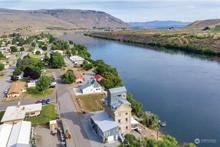


• Featuring over 6,500 sq ft of living space
• 5 Stories all with river views and an elevator
• Expansive master suite with his & her bathrooms and laundry facility
• Guest wing with 2 bedrooms each featuring full baths.
• Additional bedrooms possible
• 2 fully equipped kitchens, penthouse features kitchenette

• Bathroom on every floor
• Shop/garage/man cave 1800+ sq. ft. with ½ bath and laundry facility

• 8 original concrete grain bins/basement with constant temperature for wine storage or additional storage space totaling over 1,000 sq. ft.
• Attached 1 bdrm/1bath apartment with separate entrance
• Close to Award Winning Gamble Sand Golf Resort, Wineries, Casinos and Lake Chelan
OFFERED AT $975,000
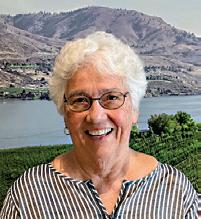
WASHINGTON
THE FLOUR TOWER BRIDGEPORT,
for Fishing, Hunting, Boating, Golfing, Exploring and Living Mary Signorelli, Broker 509-670-4972 MarySignorelli@Remax.net




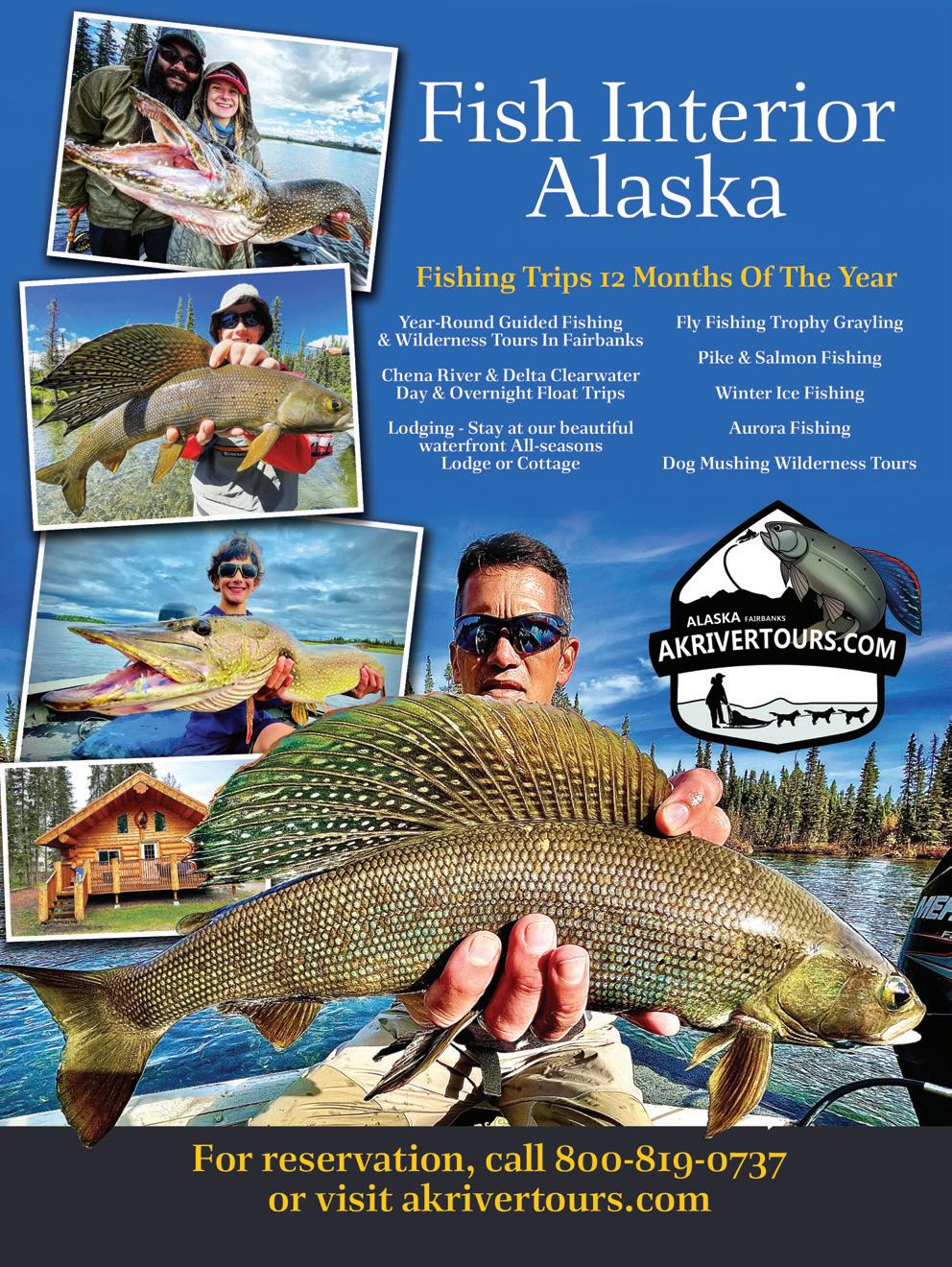

Sportsma n Californ ia
PUBLISHER
James R. Baker
GENERAL MANAGER
John Rusnak
EXECUTIVE EDITOR
Andy Walgamott
EDITOR
Chris Cocoles
CONTRIBUTORS
Mark Fong, Scott Haugen, Tiffany Haugen, Tim E. Hovey, Cal Kellogg, Todd Kline, Joe Sarmiento
SALES MANAGER
Paul Yarnold
ACCOUNT EXECUTIVES
Brian Abker, Guy Ricciardulli, Zachary Wheeler
DESIGNER
Lesley-Anne Slisko-Cooper
PRODUCTION ASSISTANT
Kelly Baker
DIGITAL STRATEGIST
Jon Hines
ADMINISTRATIVE ASSISTANT
Katie Aumann
INFORMATION SERVICES MANAGER
Lois Sanborn
ADVERTISING INQUIRIES ads@calsportsmanmag.com

CORRESPONDENCE
Email ccocoles@media-inc.com
Twitter @CalSportsMan

Facebook.com/californiasportsmanmagazine

ON THE COVER
Cheryl Hovey had usually passed on her husband Tim’s previous invites to go bird hunting. But after Cheryl joined Tim for last year’s dove opener, she got hooked on the sport and plans to go out again after a great debut. (TIM E. HOVEY)
MEDIA INC PUBLISHING GROUP 941 Powell Ave SW, Suite 120 Renton, WA 98057 (800) 332-1736 • Fax (206) 382-9437
media@media-inc.com www.mediaindexpublishing.com

8 California Sportsman SEPTEMBER 2023 | calsportsmanmag.com
Your LOCAL Hunting & Fishing Resource
Volume 15 • Issue 11

BECOMING BIRDS OF A FEATHER ...
Cheryl
31 WHITHER THE WEATHER
Remember in the old days when we stayed up for the late news just long enough to get the next day’s weather report? These days we probably just get the forecast from our smartphone weather apps, but Cal Kellogg reminds trout anglers about how changing conditions can impact your ability to fill a stringer, and how to adjust to them. As Kellogg notes, “Don’t let things like temperature drops and low-pressure areas keep you off the water.”
37 THE BAR’S OPEN
Mark Fong and a buddy had a chance to join Dan Valdez, who makes custom trolling flies for kokanee fishing, for a hot summer day on the water at Northern California’s Bullards Bar Reservoir. The guys got a tutorial on how to troll for these feisty landlocked salmon. Fong also shares background on Valdez’s fly-making passion – as well as a crazy encounter with a dive-bombing osprey that had the author flying a fish for a little bit!
55 JOIN THE ELKS CLUB
With several California elk permit seasons getting going this month, bowhunter Scott Haugen breaks down bugling and calling tips, where to find elk and treestand/ground blind advice. If you’re lucky enough to fill your tag, chef Tiffany Haugen shares how summer sausage or Thuringer can really kick up fried rice in our From Field to Fire column.

10 California Sportsman SEPTEMBER 2023 | calsportsmanmag.com
63 CONTENTS VOLUME 15 • ISSUE 11 California Sportsman is published monthly by Media Index Publishing Group, 941 Powell Ave SW, Suite 120, Renton, WA 98057. Annual subscriptions are $39.95 (12 issues). Send check or money order to Media Index Publishing Group, or call (206) 382-9220 with VISA or M/C. Display Advertising. Call Media Index Publishing Group for a current rate card. Discounts for frequency advertising. All submitted materials become the property of Media Index Publishing Group and will not be returned. Copyright © 2023 Media Index Publishing Group. All Rights Reserved. No part of this publication may be copied by any means, electronic or mechanical, including photocopying or recording by any information storage or retrieval system, without the express written permission of the publisher. Printed in U.S.A. Get the digital version of California Sportsman for free. Go to www.calsportsmanmag.com/digital ALSO IN THIS ISSUE 13 The Editor’s Note 15 Adventures of Todd Kline 19 Outdoor calendar 20 Baja shore fishing gem 45 Why to not stay in deer camp on rainy days during blacktail season 71 How to deskunk a gun dog FEATURES (TIM E. HOVEY)
Hovey always declined husband Tim Hovey’s offers to take her hunting –until last year, when out of the blue she expressed interest in trying it out. Little did either of the Hoveys realize how much of a hit Cheryl’s first time out would be, last September’s mourning dove opener. Tim recaps a memorable adventure.

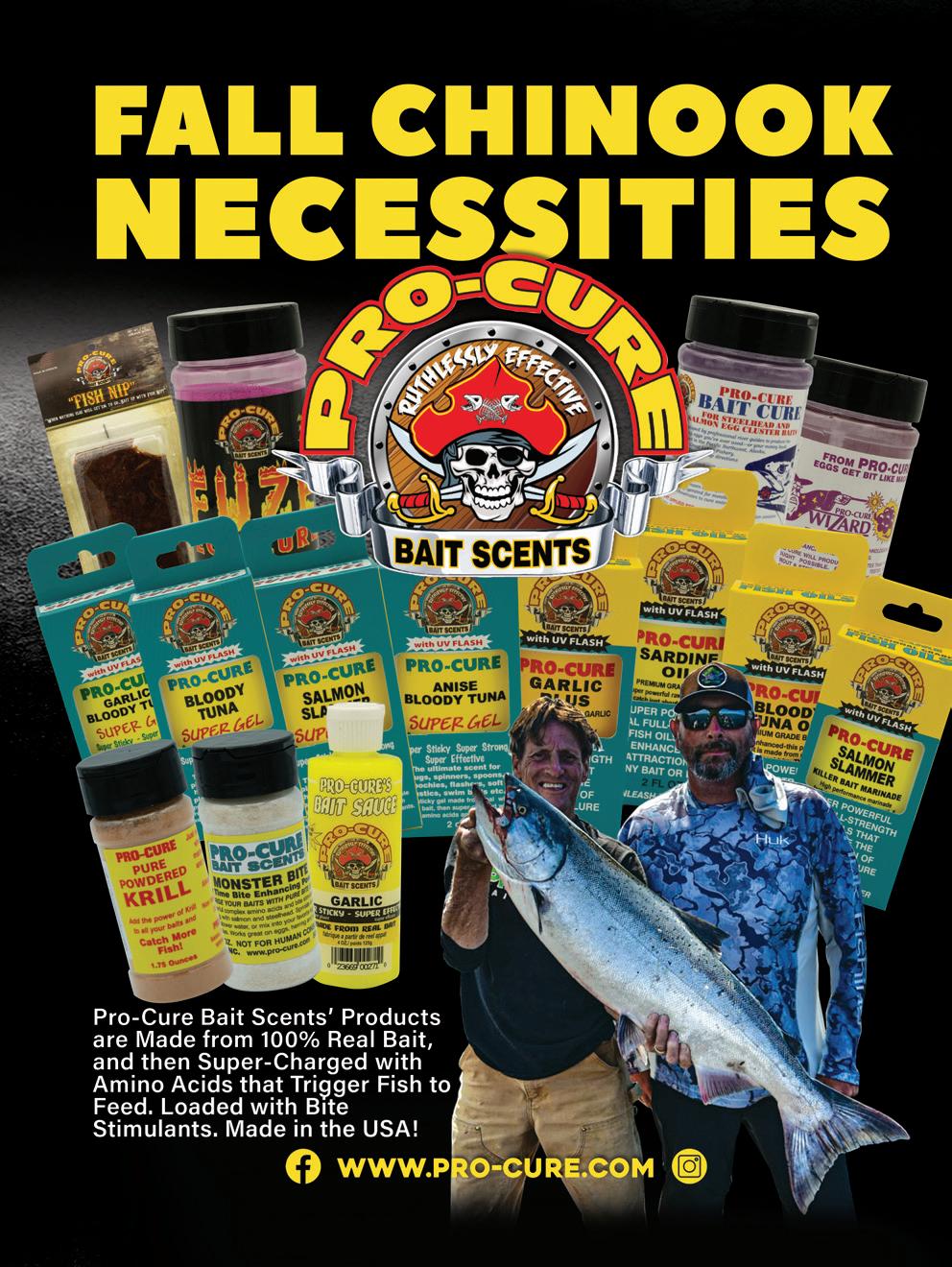
THE EDITOR’SNOTE
Having grown up on the Bay Area’s Peninsula region south of San Francisco, I can say our weather was extreme – as in extremely uneventful. It was rarely too hot, it almost never felt too cold and rainfall was mostly average.
Honestly, living in other areas since my childhood has taught me to appreciate those temperate, if not boring, days and nights. From the oppressive heat of summers in Fresno, to the blustery windy days in the high desert of Lancaster, the tornado and severe thunderstorm watches of Arkansas, and the soaking rainy seasons of Seattle, I can appreciate how spoiled I was as a kid.
The timing of two Cal Kellogg weather-related features in this month’s issue – he wrote about how trout anglers can adjust to changing meterological conditions (page 31), and why deer hunters should embrace precipitation when looking to fill their tag (page 45) – coincides with some of the strangest summer weather in California I can ever remember.



The rare phenomenon of a Pacific tropical storm, Hilary, slamming Southern California with heavy rain, flooding, high winds and mudslides made for quite an unexpected scene in areas that traditionally don’t expect such dangerous threats in August. Not in 84 years had the Golden State received a direct hit from a hurricane/tropical storm.
Welcome to 2023’s assault by Mother Nature, which continued to wreak havoc after the tragic and horrific wildfires that caused a still-rising death toll and widespread devastation to the Hawaiian Islands, particularly on Maui.
Many of us who spend time in the outdoors surely have been both wiped out by summer’s sweltering heat and chilled to the bone by a winter cold spell. I’ve been so hot on the water in a Clear Lake rental boat that we had to retreat to a shaded cove to avoid heat exhaustion. And once, when I fished with a friend in a remote stream near Susanville, my failure to wear waterproof shoes and crossing over a snowbank frosted my toes so much it seemed like I didn’t feel them again until that evening, when we were lucky enough to spend a night at a spa with a hot tub outside the rooms.
I’ve spent some extended time in August in that same Peninsula stretch of the Bay Area, where the weather has been closer to what I got used to so many years ago. Honestly, given what happened in other parts of the state throughout the last month, I’ll never take boring temperatures for granted again.
-Chris Cocoles
calsportsmanmag.com | SEPTEMBER 2023 California Sportsman 13
Our correspondent Cal Kellogg is always prepared for wet weather on a hunt or a fishing trip. And given the turbulent rainfall, flooding and mudslides in parts of California in August, of all months, we can’t take anything for granted anymore.
(CAL KELLOGG)





calsportsmanmag.com | SEPTEMBER 2023 California Sportsman 15
This is how to spend a beautiful summer day in the San Diego area! (TODD KLINE)
I also hosted the Surfing Hall of Fame induction for 2023 inductees. (TODD KLINE)
I was the announcer at late July and early August’s U.S. Open of Surfing in Huntington Beach. It was an awesome week. (TODD KLINE)
My guide trips have been awesome. This youngster caught his first fish. What a moment! (TODD KLINE)
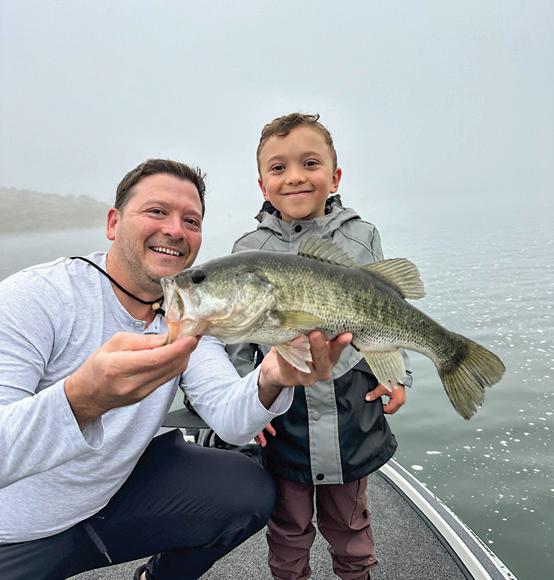
I caught this good one fishing a rock pile and throwing the new Yamamoto Yama Craw. (TODD KLINE)

You can’t beat time spent on a glassy bass lake. Enjoy the final days of summer! (TODD KLINE)


16 California Sportsman SEPTEMBER 2023 | calsportsmanmag.com
Pulling out a bucketmouth is a great feeling. (TODD KLINE)


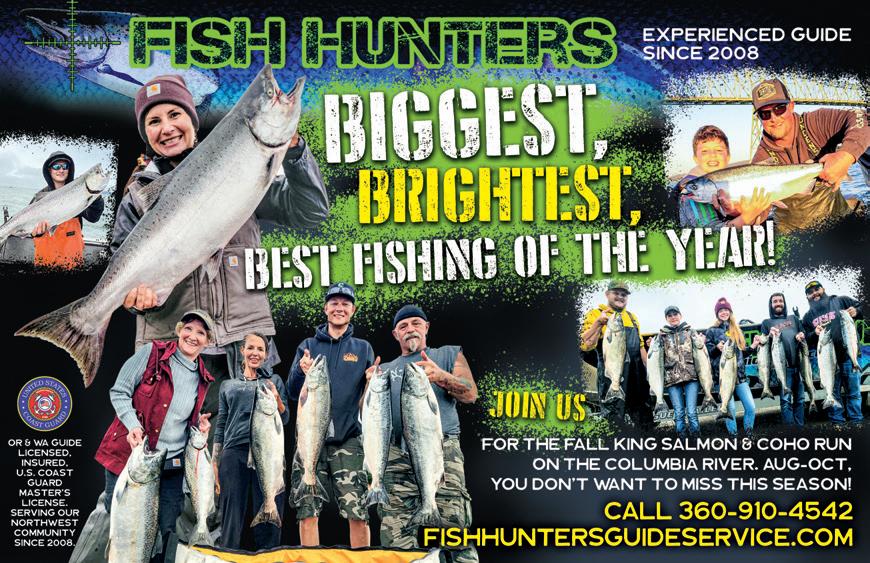
calsportsmanmag.com | SEPTEMBER 2023 California Sportsman 17

18 California Sportsman SEPTEMBER 2023 | calsportsmanmag.com
OUTDOOR CALENDAR
SEPTEMBER
1-15 First dove season dates
2 Statewide Free Fishing Day (no general fishing license required); wildlife.ca.gov/licensing/fishing/free-fishing-days
6-17 Marble Mountains Roosevelt elk either-sex apprentice season dates
6-17 Marble Mountains Roosevelt elk general antlerless and bull season dates
6-28 Northwestern Roosevelt elk general antlerless, bull and either-sex season dates
9 Shaver Lake Team Kokanee Derby; kokaneepower.org/ derbies
9 Mark Stasyuk Memorial Fishing Tournament, Folsom Lake; anglerspress.com/events/mark-stasyuk-memorialtournament
9 Zone Q1 mountain quail hunting season opens
9 Sooty (blue) and ruffed grouse seasons open
9-17 White-tailed ptarmigan hunting season dates
9-24 Lone Pine Period 1 tule elk antlerless archery season dates
13-24 Northeastern Rocky Mountain elk either-sex apprentice and general bull season dates
16 Stillwater Classic catch-and-release fly fishing tournament, Crowley Lake; crowleylakefishcamp.com/new-events/ stillwater-classic
16 Most Zones B and C, as well as Zones D-6 and -7 and X-9a general deer seasons open
16-24 Nor th Area bandtail pigeon season dates
23 Zones D-3, -4, -5, -8, -9, -10 and X-8 general deer seasons open
29 Recreational spiny lobster season opens
30 Zone Q2 all-quail season opens
For a list of upcoming bass tournaments, go to nrm.dfg.ca.gov/FishingContests/default.aspx.
General black bear season is open concurrently with the general deer hunting season in deer zones A, B, C, D, X8, X9A, X9B, X10 and X12 and extends through Dec. 31.
OCTOBER
7 Zone D-12 Archery deer season opens
7 Klamath Basin geese season opens
7 Most X Zones and D-19 general deer seasons open
7 Nor theastern Zone waterfowl season opens
7 Bridgeport Fall Trout Tournament, Bridgeport Reservoir and West Walker River; bridgeportfish.com
7-8 Early quail season for hunters with junior hunting licenses in Mojave National Preserve
14 Archery-only pheasant season opens
14 Zones D-11, -13, -14, -15 and -17 general deer seasons open
21 Zone X-9C general deer season opens
21 San Joaquin Valley and Southern California Zones duck and geese seasons open
21 Balance of State Zone duck and geese seasons open
21 Zones Q1 and Q3 all-quail seasons open
21 Statewide chukar season opens
21 Statewide snipe season opens
23 Colorado River Zone duck and geese seasons open
27-29 Morrison’s Bonus Derby Weekend, Convict Lake; (800) 992-2260, convictlake.com/activities/fishing-convict-lake
28 Zone D-16 general deer season opens
Crowley Lake hosts the Stillwater Classic, a catch-and-release fly fishing tournament, on Sept. 16. (SIERRA DRIFTERS GUIDE SERVICE)

calsportsmanmag.com | SEPTEMBER 2023 California Sportsman 19
THE ESTERO EXPERIENCE
JUST TWO HOURS SOUTH OF SAN DIEGO, AN ENSENADA ESTUARY OFFERS GREAT SHORE FISHING

 By Joe Sarmiento
By Joe Sarmiento
Tell me if this sounds like a familiar scenario: You don’t have a lot of time to go
away on vacation. You want to go someplace the family will enjoy. But it sure would be nice if you could sneak away here and there for a good fishing session. Well, have I found the place for you!
DISCOVERING THE ESTERO
I have a top 10 list of fish that I try to catch every year. They represent a wide variety of species and are found in different marine environments across Southern California and Baja. In order to catch all 10, you need to be really lucky, or chase each species when their bite heats up. I managed to get all 10 last year, but it was already August, and I hadn’t yet caught a corbina, also known as the ghost of the surf.
My go-to spot is off the southern end of Santa Monica Bay in Los Angeles. I try to get there when I can, but it’s difficult now that I live south of the border in Rosarito Beach, Mexico. Then I saw a guy post in one of my Facebook fishing groups that he was getting them at a spot called Estero Beach in nearby Ensenada. I made it my mission to go find it and try to get my corbina.
I found the spot; I even found the corbina. They were big too! But I couldn’t find any sand crabs and I couldn’t get them to go on mussels or artificial bait. Dejected, I started walking back to my car. On the way, I stopped and peered over a breakwall. To my surprise, baitfish were abundant in the water below.
20 California Sportsman SEPTEMBER 2023 | calsportsmanmag.com
Baja’s Estero Beach, near Ensenada, is about a two-hour drive from San Diego and offers an outstanding Mexico shore fishing experience for halibut and numerous other species. (JOE SARMIENTO)
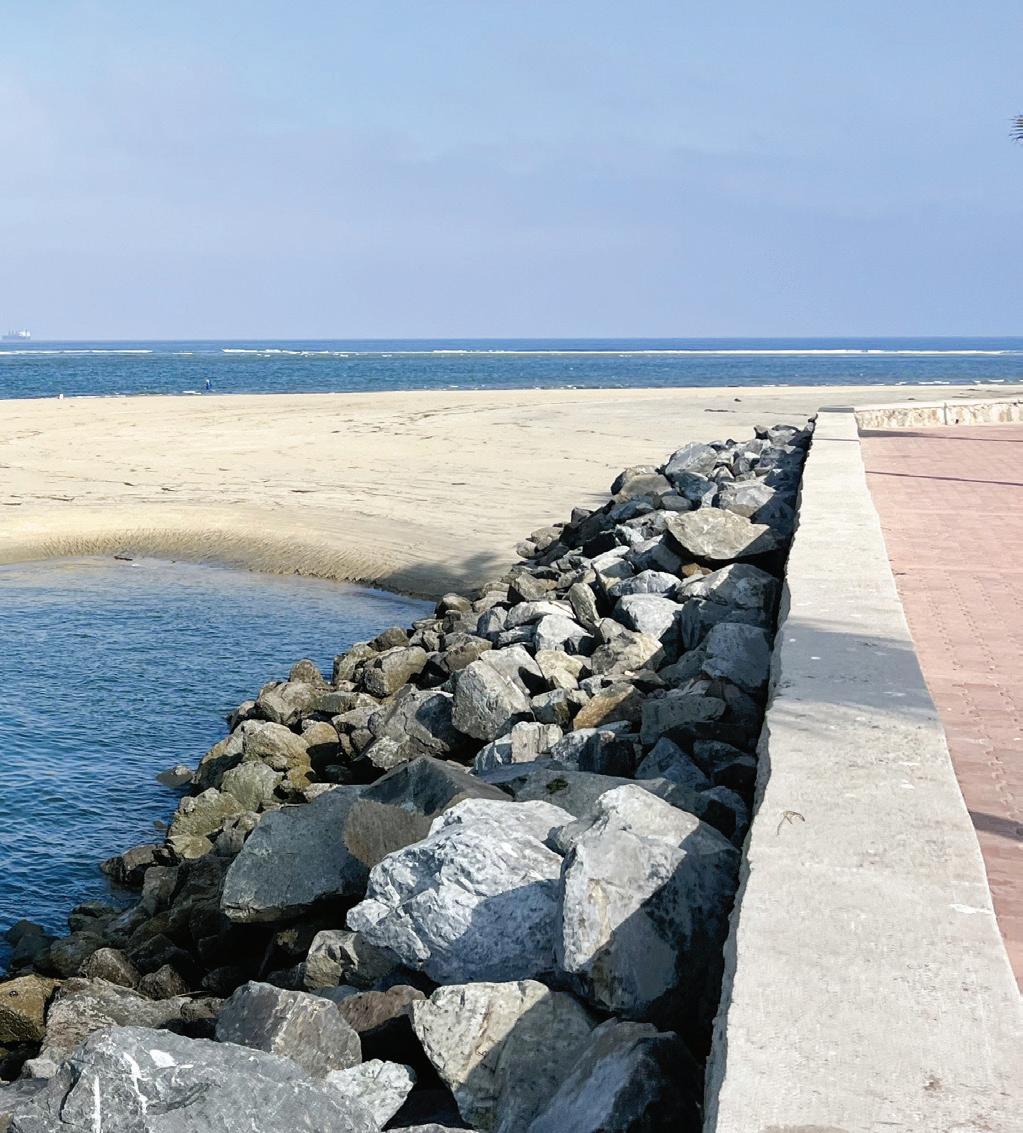
calsportsmanmag.com | SEPTEMBER 2023 California Sportsman 21 FISHING
I only had a minimal amount of surf fishing tackle with me, but I fashioned a little dropshot setup with a perch grub and caught a few dink bass to avoid a skunk. I told myself that the next time I came, I’d be better prepared to fish the bassy breakwall area. Over the next several weeks, I caught some better bass, but I also caught corvina and halibut!
It was a good run. But eventually winter came along and things shut down for a while. The winter storms that seemingly the entire West Coast endured really set back the fishing, but it finally got going in May and it’s been a fun ride ever since. Now that summer is in full swing, I see a lot of vacationers here. Some come down from the states. Others are Mexicans looking to get away from the heat in the interior and hang out in the sunny but cool beach climate. From weddings, church groups, family
reunions to Baja racers, I’ve run into them all.
There’s always an angler or two in the groups that find me and my fishing buddy Tom Sales, who lives there now, and are curious to find out how we do. When we tell them and show the pictures, they immediately wish they had brought some gear so they could enjoy the fishing too.

AN ESTERO BREAKDOWN
A great thing about the Estero (especially for the time-crunched family vacation guy) is that there are distinctly different zones that fish better during certain times (time of day, tide, etc.). From the perspective of Tom and I, it means we can literally fish all day by just adjusting where we fish.
The Estero – which is Spanish for estuary – is a body of water almost fully enclosed by land at the
southern end of Todos Los Santos Bay. Estero Beach Hotel and Resort (hotelesterobeach.com) is located where the Estero feeds into the bay. The hotel has enough rooms to accommodate large groups. There’s a nice restaurant and a large pool area. Look it up if you want the lowdown on all the amenities. My job is to tell you about the fishing.
There are three fishing zones: the outer beach area, the breakwall area and the kiddie beach/flats area. Let’s take a look at each.
THE BEACH
The best time to fish the beach is from near the bottom of the tide through to midway into the incoming tide. The lower the tide, the better.
I typically throw hard baits for corvina and halibut during low tide. Often, you’ll see bait breaking the surface, indicating something might
22 California Sportsman SEPTEMBER 2023 | calsportsmanmag.com FISHING
Author Joe Sarmiento (left) and his buddy Tom Sales get in a pre-dinner casting session along the rockwall near the pool area at the Estero Beach Hotel and Resort. (JOE SARMIENTO)

be chasing the small fish from below. Or there may even be birds (terns are the most reliable indicator) working bait. Throwing in the direction of the bait and birds is a good tactic.
As the incoming tide picks up steam and the current starts getting strong, I’ll switch to fishing something
heavier (sinking lures, mini-jig, dropshot) if I want to continue fishing for halibut. If I want to start targeting more of the surf species (corbina, yellowfin croaker, spotfin croaker), I’ll turn my attention to making bait – sand crabs and clams – and fish the edge of the sandbar right at the
dropoff. The surf species cruise up and down at the dropoff looking for food washing off the sand. Targeting the surf species with bait is a great, kid-friendly activity.
THE BREAKWALL
There is a walkway in front of the hotel, pool and restaurant. A breakwall separates the walkway from the water. This is the largest zone, and as I mentioned when recounting my initial visit to this spot, bait often gathers near the wall and rocks below. Where there’s bait – typically smelt, anchovies and/or sardines – predator species will be there to forage on them.
Tom and I fish the breakwall all the time. If the fishing on the beach has been tough, we can usually shake off the skunk by picking off spotted bay bass on a dropshot setup with a 3-inch fluke or grub. Dragging plastics along or just off bottom is good practice too.
One of my favorite strategies, though, is to make bait with a sabiki rig. The locals use throw nets to make bait, but that might be a little much to bring with you. The best time to make bait is early in the morning, especially if the tide is near the top. Then fish the bait on a dropper loop setup. Throw it upcurrent and let it bounce into fish waiting for the current to bring them a meal. You’ll have to change up based on conditions, but typically a ¾-ounce weight is good; let the current take it, but not so fast that it passes quickly by the waiting fish. Bass, halibut and corvina are all willing biters of live bait.

KIDDIE BEACH AND THE FLATS
This last zone is where Tom and I fish the most. Especially given the summer crowds, we can often escape here and have it to ourselves. We aren’t compromising in any way, though, by fishing here. Everything that can be caught on the beach or breakwall areas can be caught here too. As an added bonus, it holds bonefish!
We like to set up on the point and
24 California Sportsman SEPTEMBER 2023 | calsportsmanmag.com FISHING
Sales shows off a 31-inch halibut, caught along the beach on a Reaper Slow Pitch mini-jig. (JOE SARMIENTO)
THE


LIGHTWEIGHT.
LIGHTWEIGHT.
The lightest 200-hp four stroke on the market
The lightest 200-hp four stroke on the market

POWERFUL.
POWERFUL.
2.8L displacement and Variable Camshaft Timing give it the best power-to-weight ratio of any
2.8L displacement and Variable Camshaft Timing give it the best power-to-weight ratio of any 200-hp four stroke


COMPACT.
Nearly



Nearly 120 pounds lighter than our four-stroke V6 F200
ALL-NEW F200 IN-LINE FOUR.
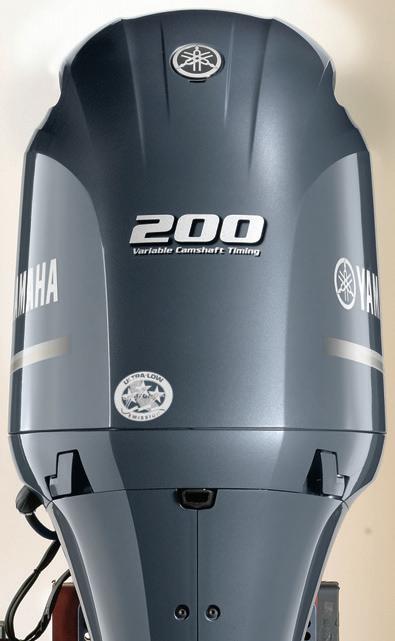

FORWARD THINKIN
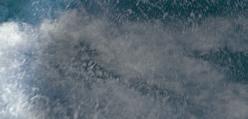
Show the water who’s boss with the new F200 In-Line Four. Incredibly light, responsive and fuel efficient, it serves up plenty of muscle to handily propel a variety of boats. On top of that, its 50-amp alternator offers the power to add a range of electronics, and its 26-inch mounting centers and compatibility with either mechanical or digital controls give you the flexibility to easily upgrade your outboard or rigging. Experience legendary Yamaha reliability and the freedom of forward thinking, with the all-new F200 In-Line Four.

calsportsmanmag.com | SEPTEMBER 2023 California Sportsman 25
REMEMBER to always observe all applicable boating laws Never drink and drive. Dress properly with a USCG-approved personal intended to be an endorsement. © 2013 Yamaha Motor Corporation, U.S.A.All rights reserved. Follow Yamaha on Facebook® and Twitter™ YamahaOutboards.com/F200InLine
200-hp four stroke COMPACT.
120 pounds lighter than our four-stroke V6 F200
the water who’s boss with the new F200 In-Line Four. Incredibly light, responsive and fuel efficient, it serves up plenty of muscle to handily propel a variety of boats. On top of that, its 50-amp alternator offers the power to add a range of electronics, and its 26-inch mounting centers and compatibility with either mechanical or digital controls give you the flexibility to easily upgrade your outboard or rigging. Experience legendary Yamaha reliability and the freedom of forward thinking, with the all-new F200 In-Line Four. THE ALL-NEW F200 IN-LINE FOUR. FORWARD THINKING. REMEMBER to always observe all applicable boating laws Never drink and drive. Dress properly with a USCG-approved personal intended to be an endorsement. © 2013 Yamaha Motor Corporation, U.S.A. All rights reserved. Follow Yamaha on Facebook® and Twitter YamahaOutboards.com/F200InLine OREGON EUGENE Maxxum Marine (541)686-3572 www.maxxummarine.com COOS BAY Y Marina (541)888-5501 www.ymarinaboats.com
Show
throw back toward the kiddie beach. It’s a pretty shallow area, so it’s kind of shocking the size of fish it holds in there. I think bait gets stuck back here and it may be easier for predator fish to hunt them. Whatever it is, we’ve caught some of our best fish in this area.
One of my favorite baits to fish in this area is the 15g mini-jig in zebra glow from Reaper Slow Pitch. A lot of times the bait is tiny and I think this jig mimics a weak fish falling out from the school. I cast the lure out, let it hit bottom and then jig it back.
Doing this one day, I watched a massive corvina swirl on it 10 feet from my perch on the wall. A brief but exciting struggle ensued. I ultimately had to walk down the wall to the beach to land this monster. When it was all said and done, it measured out to 31 inches. I didn’t have the means to weigh it, but the worldrecord fish weighed 10 pounds, 6 ounces and measured 32 inches. I’ve since seen a follower in this size class
when I was fishing live bait.
As far as bonefish go, we’re still figuring it out. I caught my only ones by accident on the mini-jig. They can, however, be caught pretty consistently on ghost shrimp. If you hit the kiddie beach or the beach by the boat launch ramp at low tide, it’s pretty easy to pump some shrimp. A small dropper loop setup with the shrimp catches the bones and a myriad of other species. This is another great option if you’re taking kids fishing.
WHAT TO BRING
My go-to setup is a Fishing Syndicate FSG Bass 800MH spinning rod, paired most often with a Penn Battle II 3000 reel. The rod is an 8-foot, one-piece rod that’s rated 10-20. If it’s easier for you to get it here, a twopiece travel rod will do the trick. My reel is loaded with 30-pound braid. I terminate the braid to a 75-poundrated swivel, then a short 20-pound fluorocarbon leader (sometimes 25
pounds), to a 75-pound-rated tactical clip. That rigging might sound like overkill, but I’ve gotten smoked a few times.
The tactical clip makes it easy to switch out the various hard baits I use. The baits also swim better than if you tied off directly on the loop. If I’m fishing plastics or live bait, I’ll tie a dropper from the swivel using 17-pound fluorocarbon.

It might be too much to bring the bait setup (line, weights, hooks, sabiki, etc.), but one small tray of lures can give you enough options to get the job done. Some of my go-to lures are the aforementioned Reaper mini-jig, Lucky Craft Flash Minnow 110 and IMA Heavy Surfer 90.
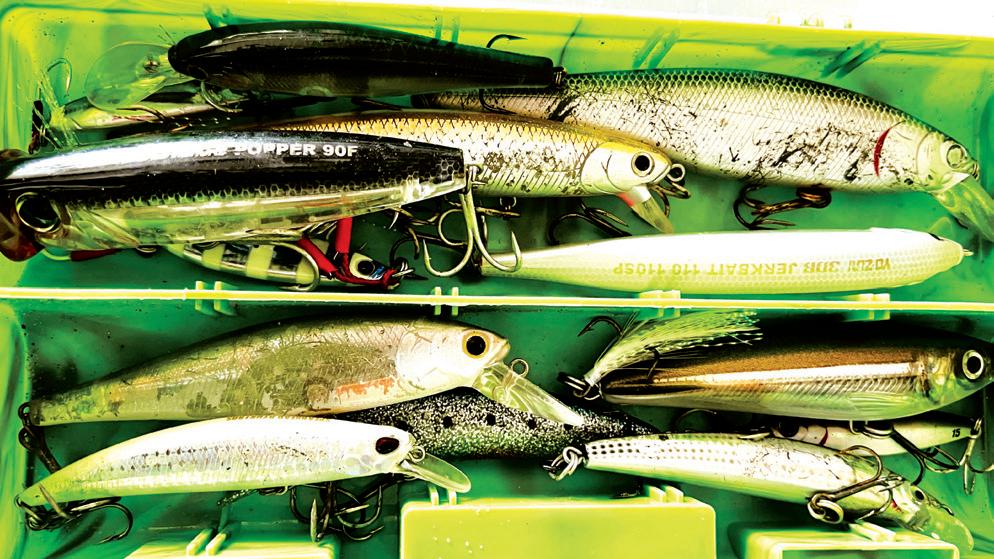
THE PERFECT WEEKEND GETAWAY
There you have it, a family-friendly beach getaway that offers world-class fishing from shore for the anglers in the group. It’s only about a twohour drive from San Diego, making it really accessible even for just a three-

26 California Sportsman SEPTEMBER 2023 | calsportsmanmag.com FISHING
A collection of baits that would serve you well on an Estero Beach trip. “One small tray of lures can give you enough options to get the job done,” the author writes. (JOE SARMIENTO)
TIME

Docking and maneuvering your boat in high winds has never been so easy. Let the Joy Stick do it for you.




GPS position hold and heading hold is included.

8 and 99 Kicker Motors in stock. Call

14900 SE STARK ST. • PORTLAND, OR 97233 HOURS: MON-FRI 8AM-6PM • SAT 9AM-3PM MOTORS MUST BE CAPABLE OF ACCEPTING JOYSTICK APPLICATION. CERTAIN LIMITATIONS APPLY. 503-255-8487 • CascadeMarineCenter.com Good Used Boats, Repair Parts, Quality Service, Knowlegeable Staff SALES • SERVICE • ENGINES
now!
Seastar Solutions Optimus EPS steering
YOU THE
Subject to approval by mercury and dealer. Subject to terms. See dealer for details. NO SALES TAX IN OREGON Mercury Marine Outboard Promotion HorespowerConsumer Rebate 9.9 Pro Kicker $100 15 Pro Kicker $150 40 & 40 Jet $200 50 $250 60 & 65 Jet $400 75 & 80 Jet $500 90 $600 115 & 115 ProXS$1,000 150 $1,250 150 ProXS $1,500 350 $2,000 400 $2,250
GETTING
RIGHT PART THE FIRST
day weekend. If you have more time, there are a bunch of sportfishing operations in nearby Punta Banda.
Depending on the time of year, tuna, yellowtail, dorado, calico bass, barracuda, bonito and a variety of bottomfishing can be done close to home. Mara’s and Blackfin Sportfishing are the two outfits I’ve been out with, but there’s a wide selection to choose from.
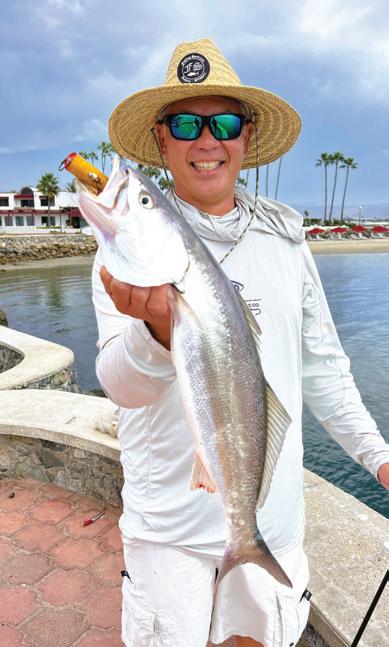
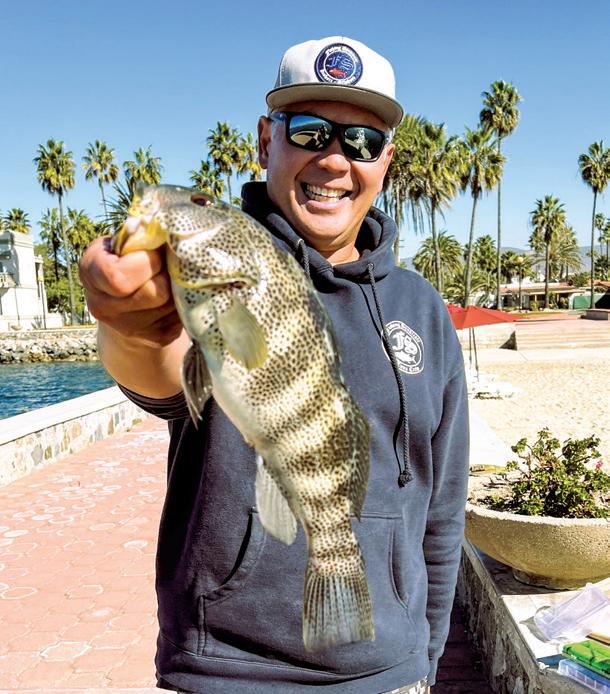
Back at Estero, because it’s a resort with a restaurant, the meseros (waiters) will often come find Tom and I to take a food/drink order while we’re fishing. When we catch something good, they’re happy to cook it up for us in the restaurant. Overall, it’s a pretty hard situation to beat. I get to fish all over, and I’m always excited to get back down here and see what’s biting. Come down and fish with me! CS

28 California Sportsman SEPTEMBER 2023 | calsportsmanmag.com FISHING
Sarmiento’s catches –corbina, spotted bay bass and shortfin corvina –reflect the diversity of the fishery along the shores of Ensenada. He terms the destination “a familyfriendly beach getaway that offers world-class fishing from shore for the anglers in the group.” (JOE SARMIENTO)

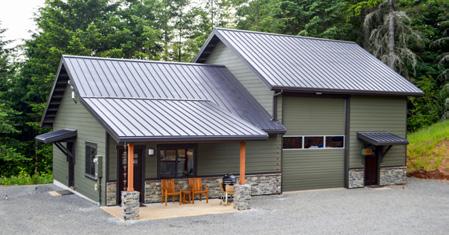


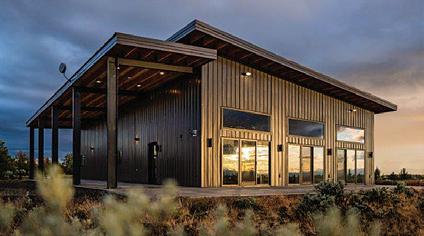





calsportsmanmag.com | SEPTEMBER 2023 California Sportsman 29 503.668.7211 Toll-free: 855.668.7211 www.wsbnw.com Manufactured in Sandy, Oregon More than a building...it’s a solution! PRE-ENGINEERED STEEL FRAME STRUCTURES COST COMPETITIVE | MAINTENANCE FRIENDLY
The Kern River in the Kern River Valley has always been the premier whitewater challenge for the rafting community. But this year after record snowpacks it has set the bar a lot higher. Every trip at every class from Class 1 to 5 is 100% excitement. Trips are offered daily from lickety-split to overnight 2-day adventures by local professional outfitters. Here Whitewater Voyages gives guests a taste of the Kern River. Check the local Chamber of Commerce’s website for outfitter companies and phone numbers.
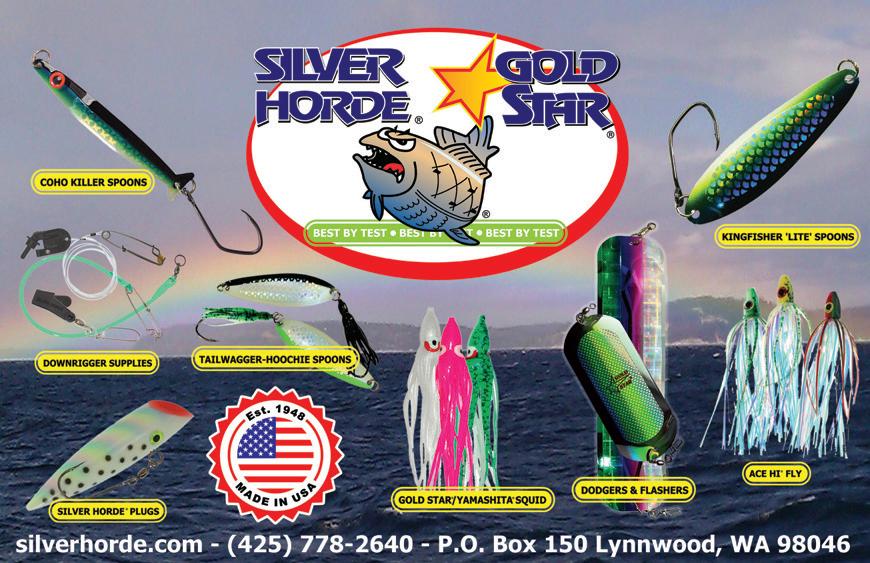
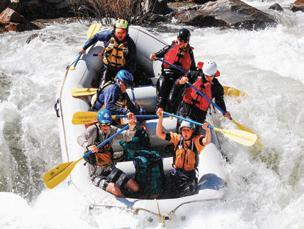

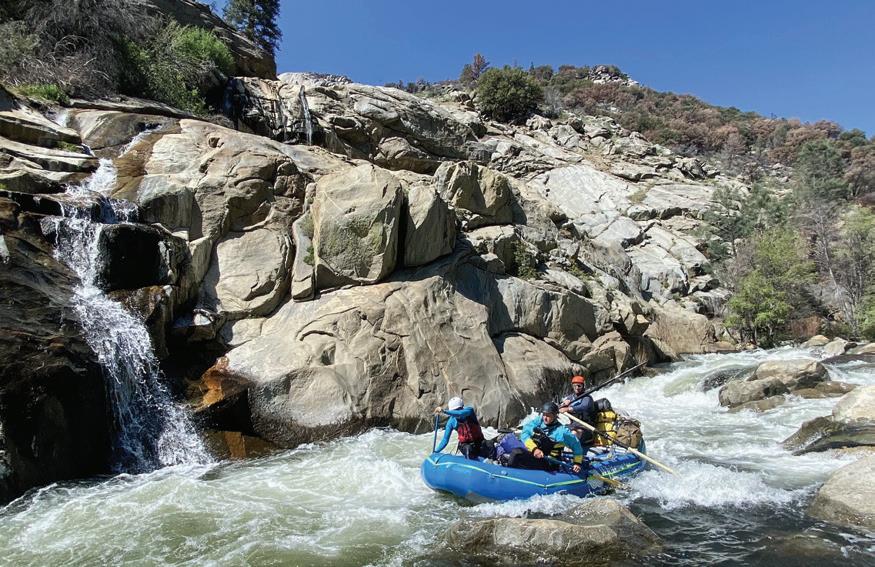
30 California Sportsman SEPTEMBER 2023 | calsportsmanmag.com
AND NOW, THE WEATHER REPORT
MEETING THE CHALLENGE OF CHANGING CONDITIONS IS A LEARNING OPPORTUNITY FOR TROUT ANGLERS, AND HERE ARE FACTORS TO CONSIDER
By Cal Kellogg
Bass anglers are very aware of how weather impacts the behavior and habits of bass. Trout anglers are nowhere near as in tune with the impact weather has on their quarry, and with good reason. Trout don’t react as strongly to weather changes as bass, but they do react.
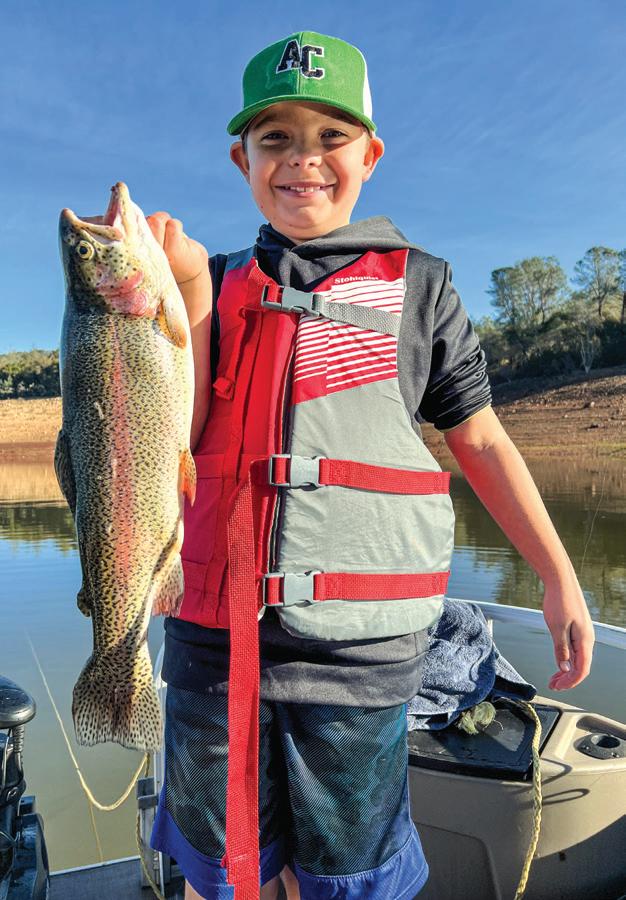
A lot of the information I’m going to present is anecdotal and based largely on my own observations, since there is little research exploring how trout react to weather conditions and weather changes.
Before we delve into a discussion of weather and trout behavior, I encourage you to begin keeping a fishing journal if you aren’t already doing so. A journal doesn’t have to be in depth, so long as you record the conditions, including the date, the weather, water temperature, methods employed, the level of success you experienced, plus anything you observed that seemed interesting or significant.
Over time, you will notice trends that will give you clues about how to approach fishing during certain seasons and how to deal with situations such as weather changes. Over the years, my journal has become an invaluable tool in predicting when and how to catch trout.
calsportsmanmag.com | SEPTEMBER 2023 California Sportsman 31
FISHING
Blue sky, fat trout and big smiles. We all love trout fishing when the sun shines, but when a storm rolls in you may need to adapt your approach to the changing conditions to hook up. (CAL KELLOGG)
WORST-CASE SCENARIOS
So, what are the worst possible weather-related scenarios for the trout angler? That’s an easy question, since there are only two situations that can make for really tough fishing. The first is an abrupt change in water temperature, and the second is fishing immediately after a low-pressure system passes.
When the water temperature changes quickly, it severely impacts the metabolism of trout because they are cold-blooded. The worst temperature changes are those lowering the temperature, even if the temperature remains within the comfort zone of the trout. An example of this would be a cold snap occurring during the fall or spring.
Let’s say the rainbows are up in the shallows of a lake or reservoir because the water temperature is 59 degrees, and then the surface temperature suddenly is driven down to 56 degrees. Even as we are only talking about a 3-degree drop – and the whole time the temperature has
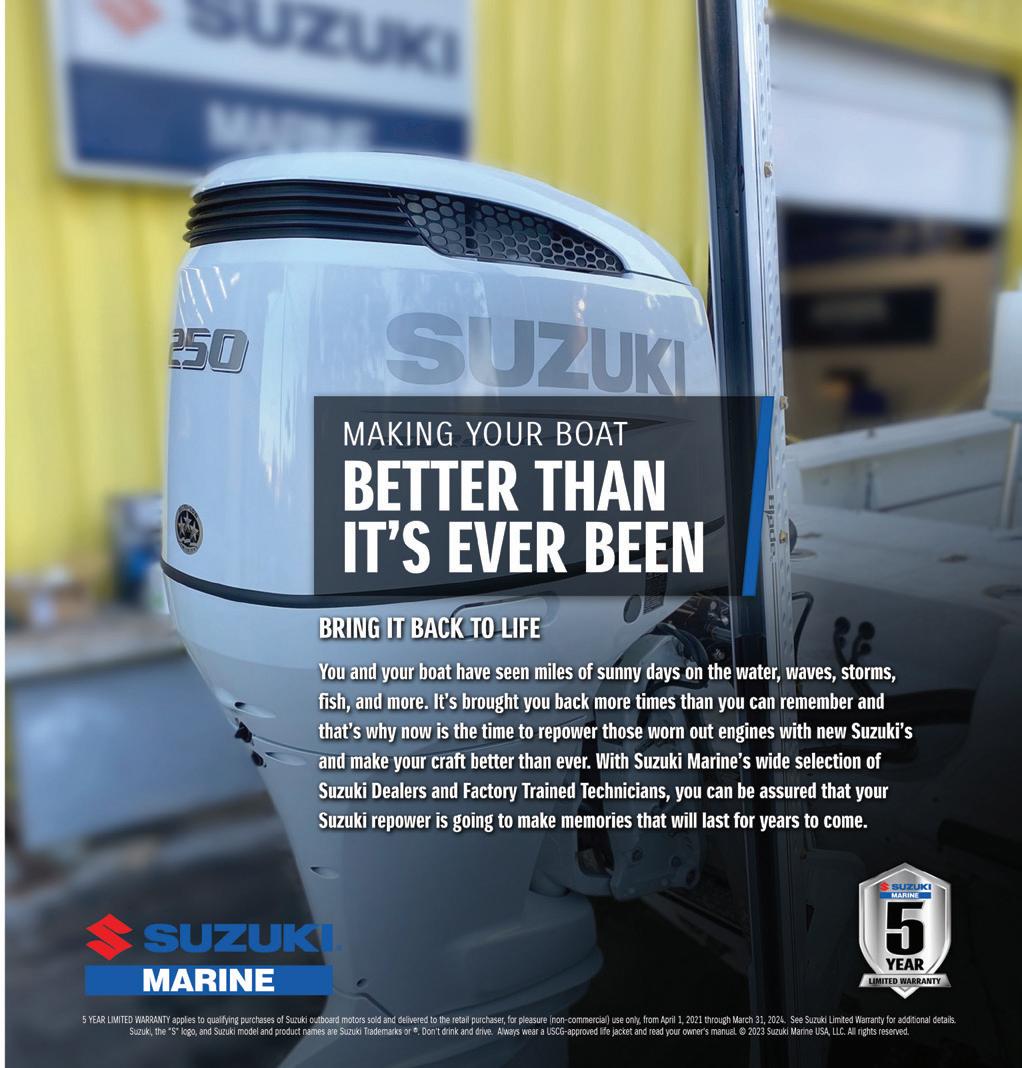
remained in the comfort zone of rainbows – the trout will inevitably become sluggish with the change.
Being cold-blooded, such a change immediately causes the metabolism of the trout to slow down, and they will feel less energetic. This means they will feed less and be less likely to chase moving offerings such as trolled lures until they become acclimated to the temperature swing.
DEPTH PERCEPTIONS
Low-pressure areas are a double-edged sword for trout anglers. As a low approaches, trout fishing is often very productive. Since we don’t live in a liquid environment, pressure changes are not noticeable to us. But trout and other fish are acutely aware of pressure changes because such changes manipulate the relative pressure of the water all around them.

Think about diving into the deep end of a swimming pool. Does the water down near the bottom of the pool feel denser and does it exert more pressure on your body than the
water near the surface? It sure does, because the water at the bottom of the pool is condensed, or pressurized, by the weight of all the water above it pressing down. When fish move up and down in the water column, they experience pressure changes, just as we do when we jump into a pool.
On the next level, let’s consider a trout holding at a set depth. If the trout isn’t making significant moves upward or downward in the water column, does the amount of pressure they feel fluctuate? No.
When the weather is stable and the barometric pressure is steady, the pressure changes very little. When a low-pressure area approaches and the barometric pressure begins to drop the relative pressure, the trout feel decreases. Once the area of low pressure passes through the region, the barometric pressure begins to push up and the relative pressure the trout feel increases.
When the relative pressure the trout feel decreases, they feel more energetic and are able to move about more easily. This increased activity
32 California Sportsman SEPTEMBER 2023 | calsportsmanmag.com FISHING
Author Cal Kellogg experienced strong winds, rain, hail and bone-chilling temperatures while trolling a foothills lake last February. The bite was tough, so he slowed down and rigged up with threaded worms. His reward was this awesome 8-pound rainbow. (CAL KELLOGG)

calsportsmanmag.com | SEPTEMBER 2023 California Sportsman 33 EUGENE Maxxum Marine (541) 686-3572 maxxummarine.com OREGON
increases the metabolism of the trout, so they feed. This in part explains why trout fishing can be very productive as a low moves in.
When the low peaks and then begins to pass, the fishing typically becomes tough. This is a direct result of the barometric pressure increasing. As the barometric pressure goes up, the relative pressure the trout feel also increases. This increase makes the fish feel less energetic, they move less, their metabolism slows, and
On a youngster’s father-son trip with the author, a guide, the bite was on as a low-pressure area approached, resulting in quick limits of trout, including this beautiful 4-pound rainbow. “We don’t learn much when the bite is wide open and we are catching trout after trout,” Kellogg writes. “It’s when we have to improvise and meet the challenges of tough conditions that we become more proficient.” (CAL
they feed less.
In the simplest terms, trout that are feeding are a whole lot easier to catch than those that are not feeding. A dropping barometer prompts them to feed, while an increasing barometer encourages them to stop feeding. This explains why anglers experience good fishing as a storm approaches and poor fishing after it passes.
SURVIVAL OF THE FITTEST
Trout are hardwired for survival. I be-
lieve another factor in why trout eat more as a storm approaches stems from the fact that, on an instinctive level, they understand that there is an upcoming period of hours or possibly even days when they will be doing very little feeding. As a result, they try to pack the pantry in preparation for the lean period ahead.
Since I’ve never actually spoken to a trout, I’m speculating about this phenomenon, but I’m confident that this is how it works. Fish and game are very much in tune with their environments. If they weren’t, they could never survive, and I think that the heavy feeding trout display with the approach of a storm is just an example of the instincts trout have developed to help ensure the survival of their species.
In a perfect world, we would never go fishing after an abrupt temperature drop or on the retreating edge of a low-pressure area. However, in the real world, most of us have to fish when we can, regardless of the conditions.

This being the case, the way to deal with either a temperature drop or a retreating low is to slow down the presentation, switch to natural baits when artificials fail and use plenty of scent.
In closing, don’t let things like temperature drops and low-pressure areas keep you off the water. All of us are busy and we’ve got to sneak away and fish whenever we can. To quote a much-repeated saying, a bad day fishing is better than the best day at work!
ALWAYS LEARNING
On another level, in terms of the growth of an angler, tough bites are good. Let’s face it: We don’t learn much when the bite is wide open and we are catching trout after trout. It’s when we have to improvise and meet the challenges of tough conditions that we become more proficient. CS
34 California Sportsman SEPTEMBER 2023 | calsportsmanmag.com FISHING
KELLOGG)

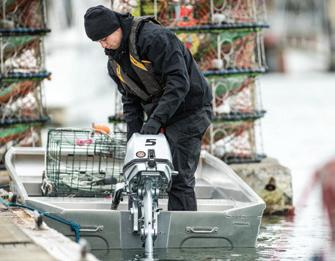

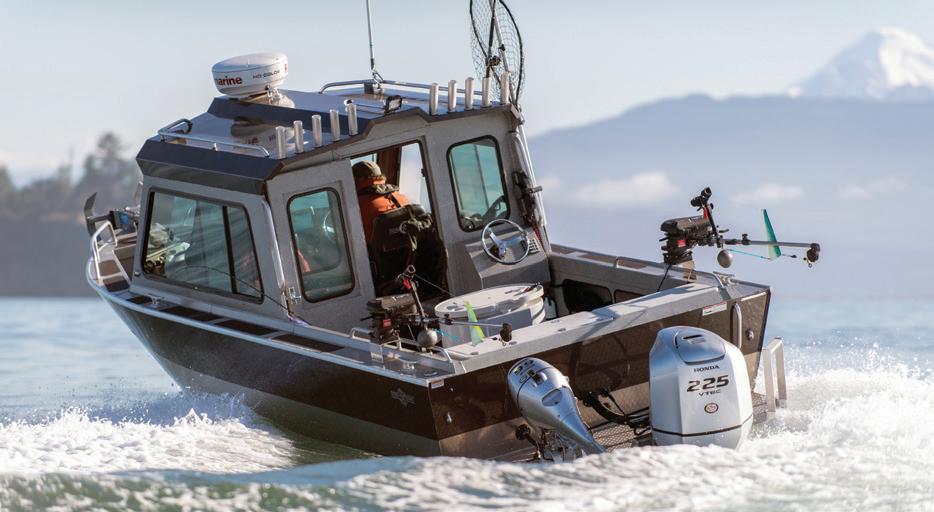
calsportsmanmag.com | SEPTEMBER 2023 California Sportsman 35 ©
personal
read
For destinations found on a map, or ones that are simply a state of mind, trust a reliable Honda outboard to get you there. And back. Find out more at marine.honda.com or visit your Authorized Honda Marine Dealer. Destination Honda OREGON COOS BAY Y Marina (541) 888-5501 www.ymarinaboats.com
2017 American Honda Motor Co., Inc. Always wear a
flotation device while boating and
your owner’s manual. All Honda outboards meet EPA and CARB emission levels.
BEST OF CHARTERS
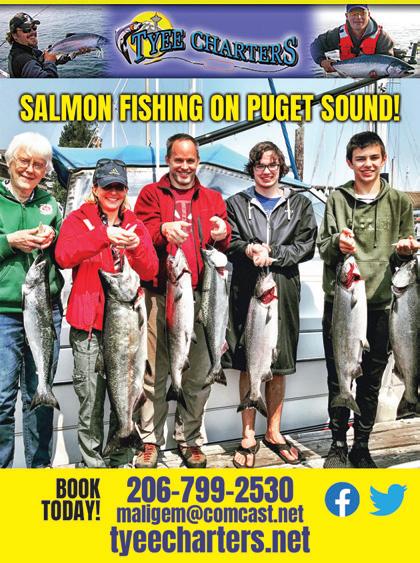

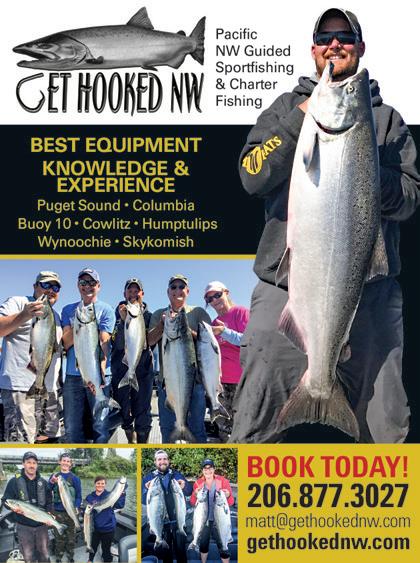
36 California Sportsman SEPTEMBER 2023 | calsportsmanmag.com
BELLY UP TO BULLARDS BAR
DRAGGING TROLLING FLIES FOR SCATTERED SUMMER KOKES AT FOOTHILLS LAKE
By Mark Fong
If you are an angler in the Sacramento Valley, then you know about the region’s version of the dog days of summer.
The heat is on, the bass are deep and won’t bite, the trout plants are over until the fall and this year, the Sacramento/Feather Rivers salmon season is closed. So what is a diehard angler to do? Kokanee, of course.
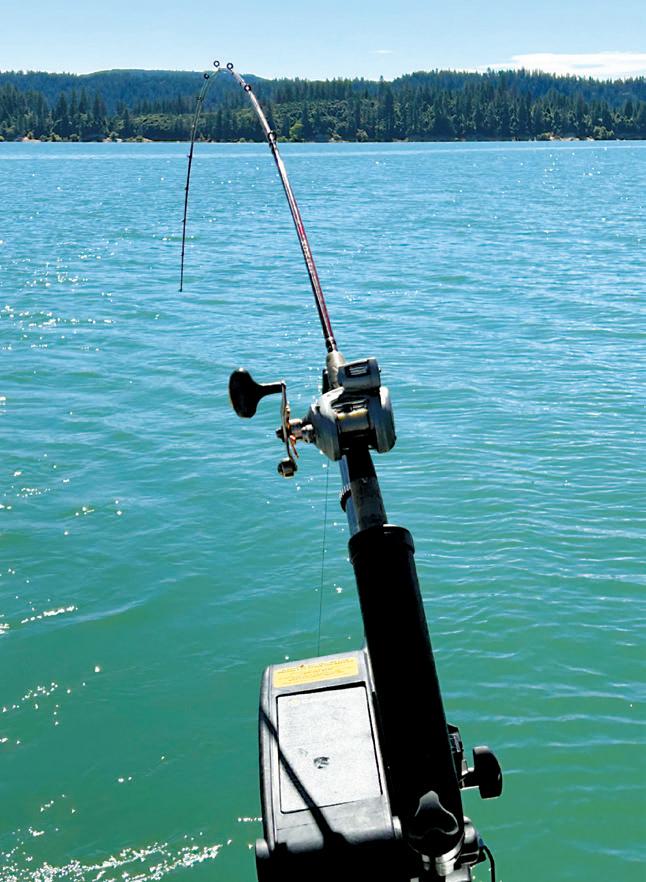
For a lot of us, the kokanee, or landlocked sockeye salmon, is the fish of summer. They are fun to catch and make excellent table fare. That’s why I was really excited to make the trip to Bullards Bar Reservoir, known for its excellent kokanee fishing, for a morning of trolling with my fishing buddies Ian Rigler and Dan Valdez, the proprietor of Draggin’ Flies by Dan.
COOL BREEZE BEGINNINGS
It was still dark when we met Dan and his canine fishing partner, Fin, at the Dark Day boat ramp. After launching Dan’s boat, we headed up the North Yuba River towards Frenchy Point. It was breezy with the inversion wind blowing out of the canyon, making the morning very comfortable, a far cry from the forecasted temp of 95 degrees for later in the day.
Dan stopped the boat near a steep point and we soon had our
calsportsmanmag.com | SEPTEMBER 2023 California Sportsman 37
FISHING
Trolling for kokanee on Bullards Bar Reservoir is a great summer option when the Sacramento Valley is too hot. The foothills can be a little cooler and the fishing is often productive. (MARK FONG)
lines in the water. Each trolling rod was rigged with a different fly and dodger combination and it did not take long for the first rod to go off. I quickly removed the rod from the holder and popped the line free from
the downrigger release. After a short fight, the feisty kokanee – Bullards Bar fish usually range between 11 and 14 inches long – was close enough to the boat so that Dan could drop the net and scoop it up. I quickly
unhooked the fish and Ian placed it in the bag.
I rebaited the fly with corn and let the line back out behind the boat. Dan clipped the line to the downrigger ball and carefully lowered the weight back down the water column.
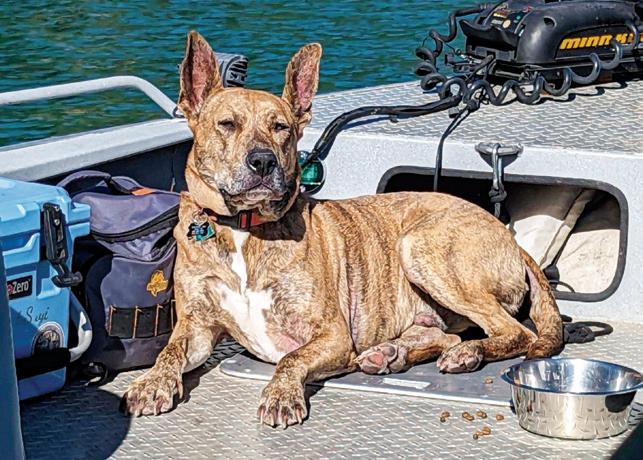
And so it went throughout the morning.
A SPORADIC BUT STEADY BITE
We had consistent action, but found the fishing to be challenging. The kokes were definitely scattered. We would catch one here and two there, but we never found a big group of fish schooled up.
Kokanee have very soft mouths and are notorious for coming unbuttoned. Despite our best efforts to carefully reel the fish to the boat and to minimize the amount of flopping on the surface, we lost a fair amount of fish to the dreaded long-distance release.
THREE KOKANEE KEYS TO CONSIDER
There are many key factors to successful kokanee trolling, but the top
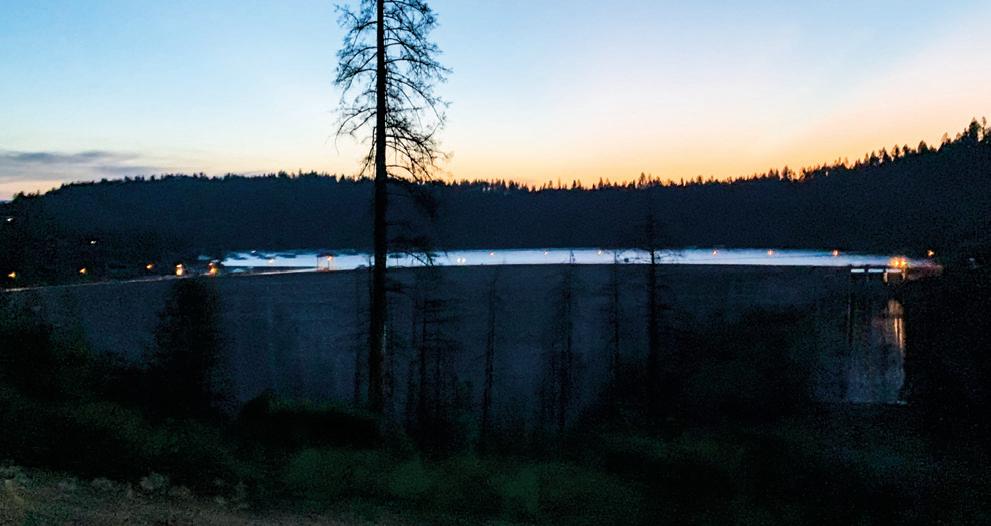
38 California Sportsman SEPTEMBER 2023 | calsportsmanmag.com FISHING
Sunrise at Bullards Bar, when the hot summer conditions are a little more tolerable for being on the water. (MARK FONG)
Fin the dog is kokanee troller Dan Valdez’s constant fishing companion. (DAN VALDEZ)

HOW A GEAR GUY GOT HOOKED ON FLIES

Dan Valdez has always been a fishy guy. The transplanted Southern California native cut his teeth fishing the piers and jetties around his home in Orange County’s Santa Ana.
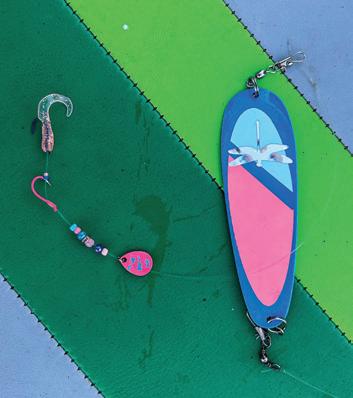
“My dad started me young; I was maybe 3 years old when he would take the family down to the pier in Newport Beach,” Valdez says. “A job brought me (north) to Chico and I fell in love with the area. I started exploring and fishing the rivers, and it wasn't long before I had my own jet boat, and after a while I started guiding on the river.”
Valdez guided on the Sacramento and Feather Rivers from the mid-1980s to the mid90s, but when the salmon fishery started to decline, he stopped guiding and changed his focus to lake fishing, primarily for trout, with a smattering of landlocked salmon as well. Along the way he learned how to tie shad flies, which were available at a local fly shop. It would be an important piece of foreshadowing for things to come.
A few years back, Valdez was reintroduced to kokanee fishing. “It had been 20 years since I last fished for kokanee, but I started going with friends and pretty soon got addicted to it,” he says. “I was using a lot of hoochies, and one day I had the idea that I could probably tie up a fly version. That's kinda how this whole Draggin’ Flies thing got started.”

That was seven years or so ago. Today, Valdez is as busy as he chooses to be. He hand-ties every leader and every fly.
“I was making flies for myself and catching a lot of fish with them. Pretty soon the guys I was fishing with started asking if I wanted to share them, and then more and more people began asking if they could buy them,” he adds. “After a while I started building my own dodgers and people wanted those too.”
Customers can select from his catalog of proven patterns, or he can customize an order to their specifications. Last year he tied just shy of 4,000 flies. His flies and dodgers are available direct or through a selected number of dealers in the Northern California area.
If you would like to contact Dan or purchase his flies and dodgers, you can contact him through his Facebook Page at Draggin’ Flies by Dan. -MF
three are depth, speed and lure color. That morning, we found the best action at a depth of 30 to 45 feet and with a trolling speed of 1.2 to 1.4 mph.
But a funny thing happened in relation to color. The morning before Dan left the house, he tied up a pink and blue Wedding Ringstyle spinner, which ended up being the most productive fly of the day. The kokanee were super finicky and showed a distinct preference for the pink and blue flasher/fly
40 California Sportsman SEPTEMBER 2023 | calsportsmanmag.com FISHING
Valdez makes his own flies and dodgers, and on this day the hot color that tempted fish was a pink and blue Wedding Ring-style spinner. (MARK FONG)
“I was making flies for myself and catching a lot of fish with them,” says tackle maker Dan Valdez. “Pretty soon the guys I was fishing with started asking if I wanted to share them, and then more and more people began asking if they could buy them.” (DAN VALDEZ)
Cook
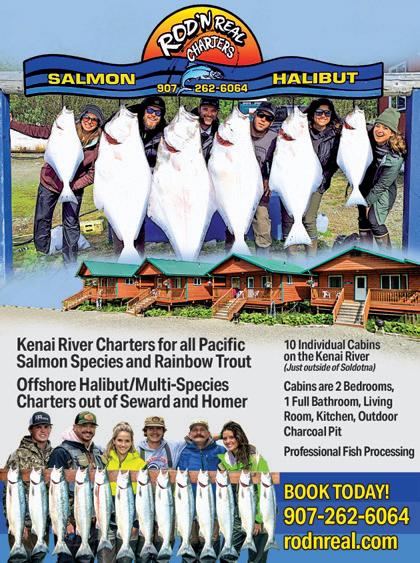
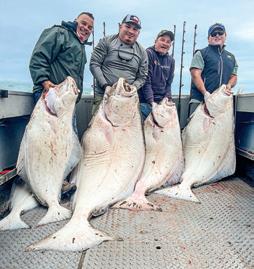
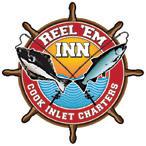
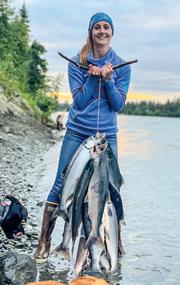


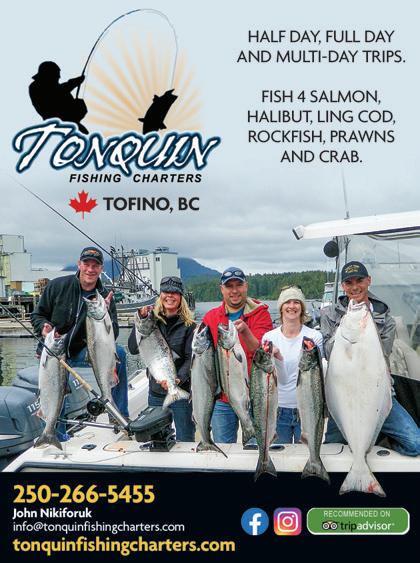
calsportsmanmag.com | SEPTEMBER 2023 California Sportsman BEST OF CHARTERS TO BOOK YOUR NEXT NINILCHIK FISHING CHARTER CALL REEL’EM INN AT 800-447-7335 cookinletcharters.com WE OFFER A COMPLETE ALASKAN FISHING PACKAGE • World-class halibut & salmon fishing • Clean and comfortable lodging • Full-service fish processing and packaging • RV park with full hook-ups
Inlet
and Ninilchik
Charters Located in Ninilchik on the Kenai Peninsula
Fishing
Fishing
THE OSPREY COMETH

On his Draggin’ Flies With Dan
It came when an osprey swooped down from high above and grabbed my hooked-up kokanee off the surface of the water. The bird flew off with it while the fish was still attached to my line! For a brief moment, it was like I was flying a kite.
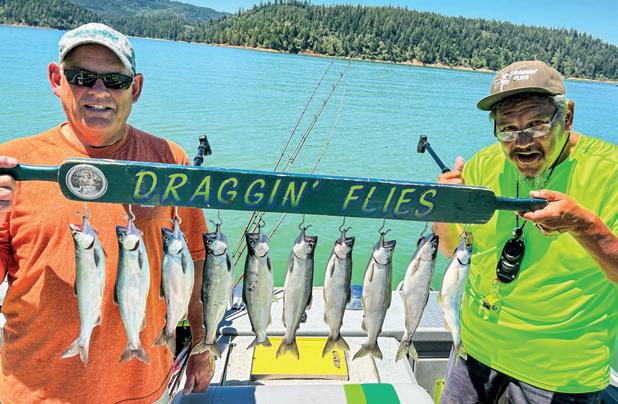
As quickly as it happened, the hooks pulled loose and the osprey flew off with my fish. I was left with empty hooks and no fish, but a great story nonetheless.
THE HEAT IS ON
As nice as the weather was in the morning, around the noon hour, the wind died, the temperature became uncomfortably hot and the pleasure boats and Jet Skis began to show out in force. We decided to call it a day and ended up with a nice cooler of fish for the table and some great memories. I can’t wait to go again. Perhaps we’ll catch more fish, especially the ones the osprey can’t get to first. Just sayin’. CS
42 California Sportsman SEPTEMBER 2023 | calsportsmanmag.com FISHING
Ian Rigler (left) and Valdez with a nice stringer full of Bullards Bar kokes. (MARK FONG) combination. Once Dan made this determination, we switched out other rods to the hot color.
Facebook page (see the sidebar on the previous page for more information), Valdez ends all of his posts with the catch phrase “Just Sayin’.” One moment on our trip certainly was Just Sayin’ worthy.
EUGENE, OR Maxxum Marine (541)686-3572 1700 State Hwy 99 N lloyd@maxxummarine.com www.maxxummarine.com


calsportsmanmag.com | SEPTEMBER 2023 California Sportsman 43

DON’T BLAME IT ON THE RAIN
WET WEATHER MAKES FOR GOOD DEER HUNTING, IF YOU DON’T LET CONDITIONS KEEP YOU IN CAMP
 By Cal Kellogg
By Cal Kellogg
In autumn, West Coast blacktail country often plays host to nasty Pacific storms. While it’s true that rain is the nemesis of most outdoor sports, deer hunting stands in stark
contrast, a fact lost on those hunters who let inclement weather signal the end of their hunt.
For the hunter who understands blacktail behavior and how to take advantage of stormy conditions, rain is the strongest of allies.
A FEW YEARS BACK, a small cold October storm rolled through Northern California. It started raining on the first Sunday night of the deer season. On Monday morning, I logged onto the feed from a traffic camera located at the junction of two high mountain high-
calsportsmanmag.com | SEPTEMBER 2023 California Sportsman 45
HUNTING
Author Cal Kellogg harvested this quality public-land blacktail immediately following an 18-hour rain and snow storm that left other hunters pinned down in camp and waiting for things to dry out. Sometimes, wet conditions can benefit hunters hoping to fill their tags. (CAL KELLOGG)
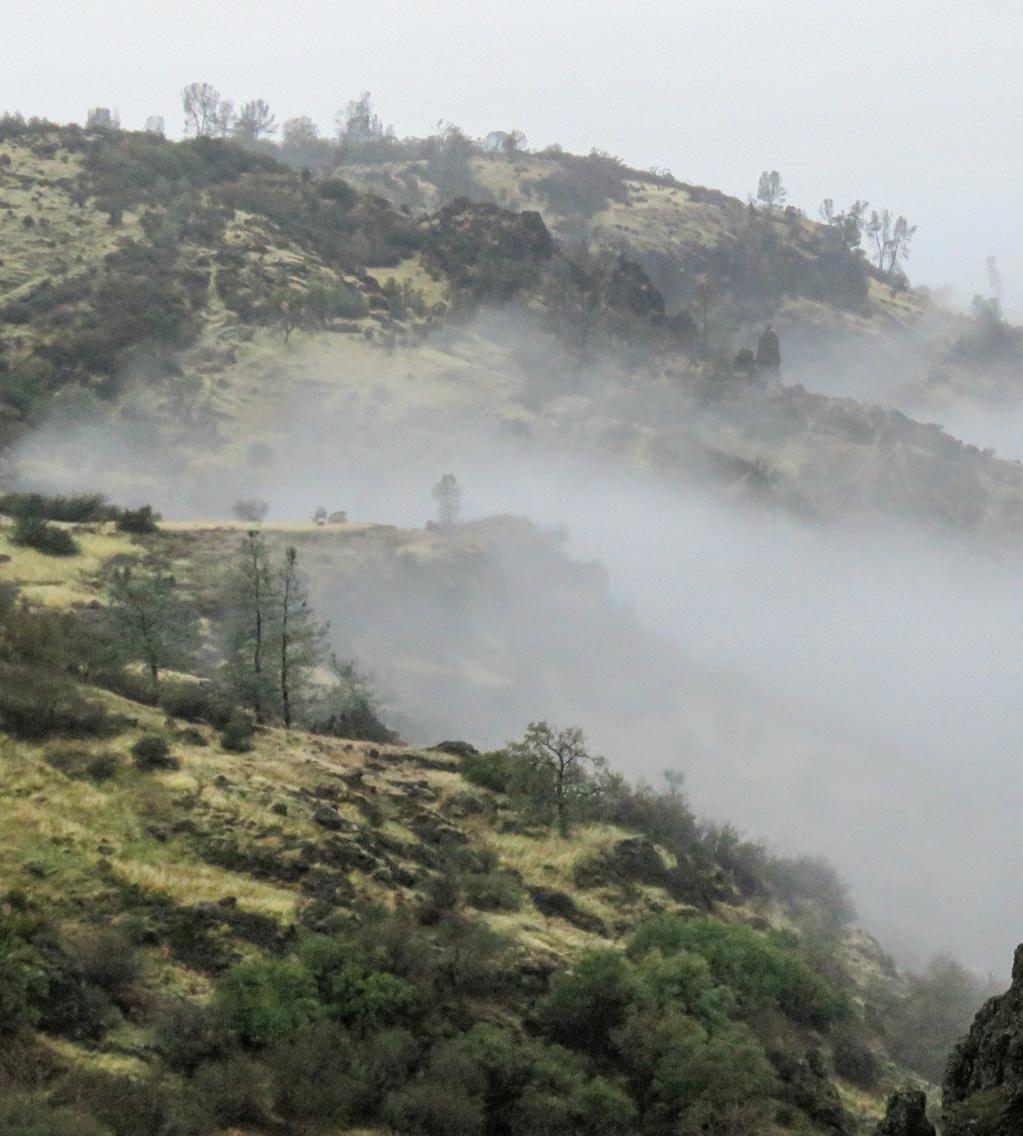
46 California Sportsman SEPTEMBER 2023 | calsportsmanmag.com
When storms roll in and deer start moving, stand-hunting is often the best option. (CAL KELLOGG)
ways. There was snow on the road. My heart started beating faster because I knew the deer in my hunting area were almost certainly migrating.
My gear was packed and ready, but I had business obligations I couldn’t blow off. My plan was to take care of business on Monday, make an appearance at a meeting Tuesday morning and then drive to my hunting zone.
It spit rain for much of my drive north and the mountains east of Interstate 5 were hidden by a sinister-looking soup of dark clouds. When I pulled into my campsite east of Red Bluff around lunch time, the sky was threatening, but no rain was falling.
I set up my tent, improvised a tarp over my makeshift kitchen and heat-
ed up a triple portion of spaghetti I’d brought from home. I needed to top off the tank because I’d likely be in the woods until dark.
By the time I’d finished eating, slivers of blue sky were starting to show. The forecast called for clearing conditions. Rather than put the rain gear on, I stashed it in my pack – just in case. With my pack, rifle, binoculars and a pad to keep my rear end dry, I started hiking toward a lava formation on the edge of a big canyon where I’d make my stand.
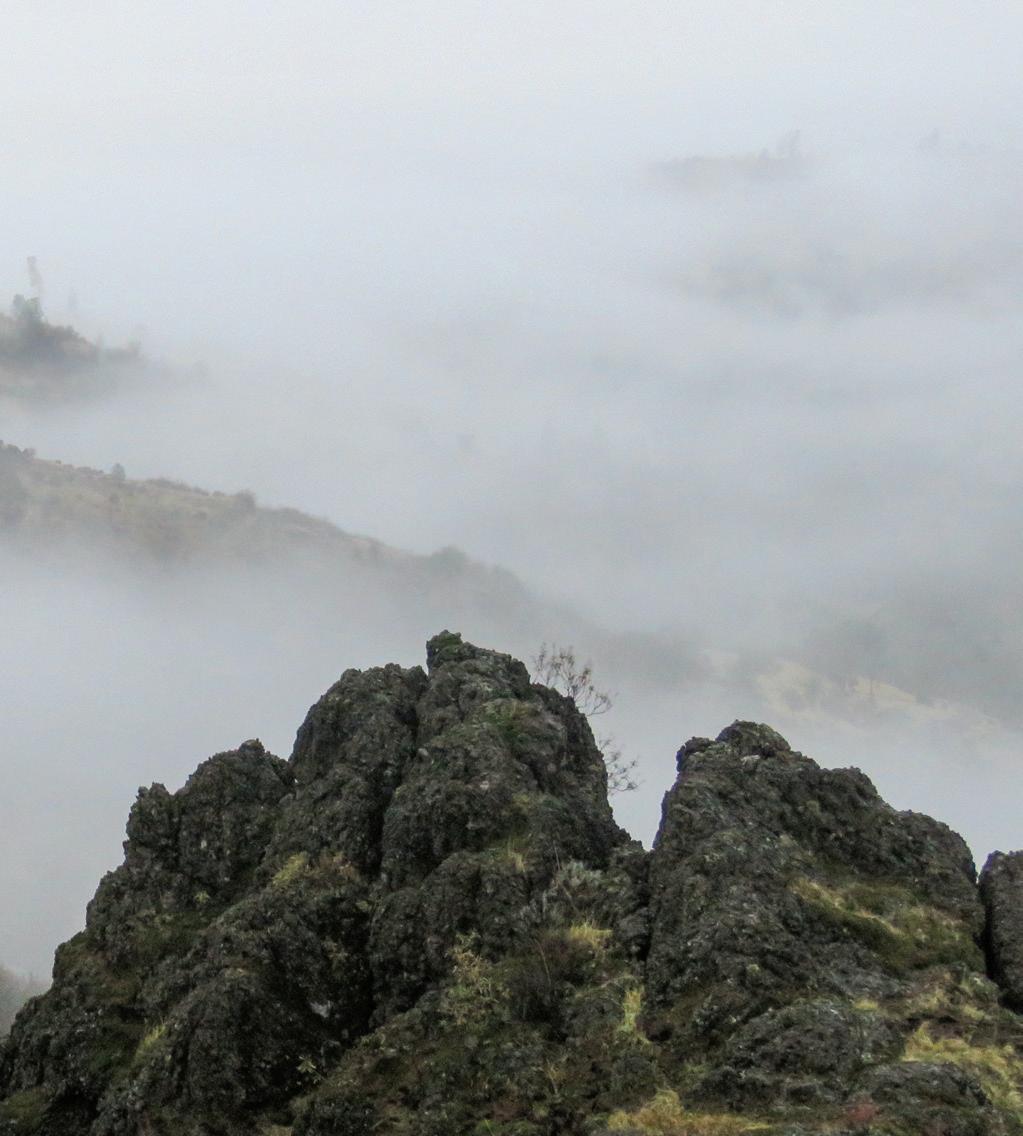
On the way out I walked past a camp. There were three guys standing under a tarp roof, drinking beer and looking at me like I was a little nuts.
“How are you?” I greeted.
“Just fine. We are hoping things dry out enough for us to get out and hunt tomorrow,” one of them replied.
I wished them good luck and kept walking. They were missing a
great opportunity because they were afraid of rain.
Around 3:30, two mature bucks and a doe walked out on a knob across from my stand. My range finder indicated they were 298 yards away. For me, it was a massively long shot, but I had plenty of time, a good rest and my 7mm was more than up to the task.
The buck I selected plunged downhill. He probably traveled 80 yards, dropped and went still. My deer season was over. I’d made a good shot, but the real hero of the story was the storm that put the buck in position for me to harvest.
STORMS AND PRECIPITATION EMPOWER hunters because they impact the defenses and behaviors of blacktails in predictable ways, at both the individual and herd level.
Blacktail deer depend on their physical senses of smell, hearing and sight, in addition to behavioral adaptations, as means of avoiding predators. When the woods are dry and quiet, hunters face a serious disad-
calsportsmanmag.com | SEPTEMBER 2023 California Sportsman 47
HUNTING
vantage because the blacktail’s acute senses will be working at peak efficiency.
A blacktail’s sense of smell is its foremost line of defense, followed closely by the senses of hearing and sight. During normal conditions, a deer’s sense of smell is the most difficult to overcome.
Stormy weather can help you beat a blacktail’s nose in two ways. First, most storms are accompanied by winds that blow from a fairly consistent direction. Once you establish the direction of the wind, defeating the deer’s nose becomes a matter of keeping the wind in your favor.
If there is no wind blowing, rain and wet dense air can still help defeat a buck’s nose, since they limit the spread of your scent by forcing it to the ground before it can disperse.
Blacktails possess highly refined senses of hearing and sight that enable them to identify and pinpoint sources of noise and movement.
From a quail running through leaves to a squirrel cutting pine cones, the deer woods are ripe with sound and movement. Natural and

recurring sounds are stored in the blacktail’s memory and the deer pay them little attention.
Unnatural sounds like the crunchcrunch-crunch of an approaching hunter are quickly identified as potential danger. However, blacktails seldom flee based on a single noise or movement. Instead, they focus all their senses on the source of the suspicious activity, depending on smell or sight or both to confirm the danger before they flee.
Rain and stormy conditions help the hunter by quieting the ground and creating diversionary noises and movements. When sufficiently saturated, sticks, leaves and grasses that once snapped, crackled and popped become a soggy, silent carpet. The sounds of falling rain and the wind that often accompanies it drown out any inadvertent noise a hunter might create.
When the weather is fair and dry, blacktails maintain a low profile by bedding during daylight hours. They feed and move during the low light periods of dawn and dusk.
At these times blacktails are less visible and can take advantage of
their excellent night vision. Hunting pressure magnifies this tendency and bucks often respond by becoming completely nocturnal.
From a behavioral standpoint, rain helps the hunter because it increases daylight deer activity and can snap pressured bucks out of their nocturnal pattern.
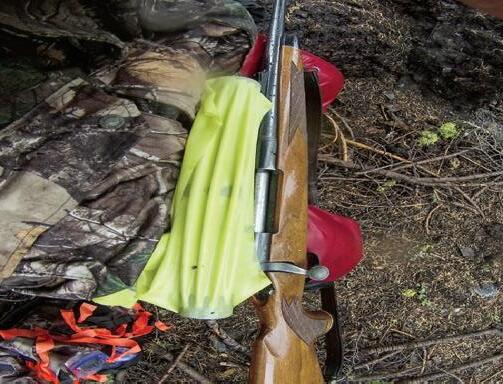
While most experts agree that deer activity increases during rainy conditions, they disagree as to why. Some experts attribute it to the low light conditions accompanying rain. They speculate that these light levels, being similar to those of dawn and dusk, encourage blacktails to feed.
Others contend blacktails have an internal barometer of sorts that warns them bad weather is coming. The deer react by feeding heavily at the outset of a storm, knowing that harsh conditions may curtail their ability to feed in the coming days.
I think there is truth in both theories, but I believe additional factors may be at work. Perhaps the lack of moonlight due to overcast skies makes nocturnal feeding difficult, and the virtual absence of hunting
48 California Sportsman SEPTEMBER 2023 | calsportsmanmag.com HUNTING
For serious wetweather hunting, you’ll need to tailor your gear to the conditions. Here, we see the homemade scope covers made out of a latex exercise band the author prefers to more expensive commercial covers.
(CAL KELLOGG)
In the 24 hours prior, this area held few deer. All it took for the deer to move in was a few hours of rain. (CAL KELLOGG)

pressure when it’s raining undoubtedly contributes to the spike in deer activity we observe.
I’M ALWAYS AMAZED BY the reluctance of hunters to operate in the rain. I remember a wet day in October a few years back when my hunting partner and I took a pair of big bucks within 300 yards of a well-traveled gravel road. Despite seeing dozens of road hunters, we didn’t see a single hunter in the woods hunting.
At the herd level, the behavioral effects of stormy weather can be dramatic. The West Coast has both resident and migratory blacktail populations. Resident blacktails, much like eastern whitetails, spend their lives within a few miles of their birthplaces.
On an individual level, resident blacktails show increased feeding activity when confronted with rain, but the herd as a whole doesn’t change locations. In contrast, migratory blacktails are nomads, spending summers in the high country and winters in low-elevation foothills. The first major cold storm of autumn generally triggers the migration.
The hunting during such storms
can be fantastic, as large numbers of blacktails stream out of the high country, headed for their low-elevation winter range.
To develop an effective wetweather strategy, it’s critical to know whether you’re hunting a resident or migratory herd. This can be determined with a call to your region’s deer biologist. Pick up a topographical map of the area and study it prior to calling so that you can identify any areas the biologist highlights.
If the biologist reports the deer in your area are migratory, ask about the elevation and basic location of the herd’s summer and winter ranges. Follow up with questions regarding the conditions that trigger the migration and the route the herd travels while migrating.
Finally, ask that the biologist give you an overview of the herd’s fall behavior. Some herds migrate directly from the high country to their winter ranges. Other herds filter down from the high country into the midelevation hardwood belt, where they spend up to a month feeding on acorns before storms finally move them to the winter range.
BLACKTAILS IN ANY GIVEN region typically react in one of three ways when confronted with storms and precipitation: They either migrate, become active and feed, or hole up in sheltered areas. The key factor in determining how the blacktails react, beyond whether it’s a resident or migratory herd, is the severity and duration of the storm.
Blacktails that migrate do so in October and early November, during the first snow of the year. Before and after the migration, these deer respond to rain in the same way as resident blacktails, meaning they become active during daylight hours and feed vigorously.
Heavy sustained rain or strong winds drive both migratory and resident blacktails to seek refuge in dense cover. When it’s raining, both stand- and still-hunting tactics can be effective. To maximize success, it’s important to tailor your approach to the weather and the anticipated or observed reaction of the deer.
In situations when deer are actively migrating or feeding, stand-hunting is always my first choice. If I can set up in a concealed location and

50 California Sportsman SEPTEMBER 2023 | calsportsmanmag.com
HUNTING
The author sits on a high vantage point and glasses for bucks as the leading edge of a low-pressure area moves in. “Heavy sustained rain or strong winds drive both migratory and resident blacktails to seek refuge in dense cover,” he writes. (CAL KELLOGG)

HUNTING
have the blacktails come to me, I’ve got to take advantage of it.
Sure; I could score in the same situation while still-hunting and I might even see more deer, but using that approach I’d run a much greater risk of being spotted and spooking deer.
Superficially, stand-hunting seems simple. You just plop down in the woods and patiently wait until a buck sneaks into view. In practice, however, stand-hunting is much more complicated. The criteria I use for selecting a migration stand are different from those I apply when selecting a stand aimed at intercepting a feeding buck.
I locate migration stands based on terrain and the elevation of the herd prior to the arrival of autumn’s first major storm. I like to set up 1,000 feet below the herd’s elevation, near terrain features that concentrate deer
movement. Saddles, points, canyon junctions and breaks in rimrock are examples of the areas I target.
Finding productive stands in feeding areas usually requires more legwork than locating migration stands, which can sometimes be pinpointed from home using a topographic map.
FOR RAINY-DAY HUNTING, I like to target food sources such as acorns, fruit trees, grapevines and berry patches that show evidence of deer activity near bedding cover.
If you’re lucky enough to stumble on such a spot that also features buck sign in the form of recent rubs, guard its location closely, because it has the potential to be a wet-weather hotspot.
In situations when deer are holed up in thick cover and refuse to move as a result of heavy rains, winds or
both, still-hunting becomes the tactic of choice.
For me, periods of strong wind have always been productive. Deer absolutely hate strong wind because it effectively nullifies their senses and makes them feel vulnerable. As a result, deer seek out and concentrate in areas that have the least wind.
I generally focus my efforts on areas of brush situated on the downwind side of ridges. The knowledge that bucks prefer to stay on the upper third of ridges allows me to further refine my attack, resulting in many close encounters over the years. CS
Editor’s note: Cal Kellogg is a longtime Northern California-based outdoors writer. Subscribe to his YouTube channel Fish Hunt Shoot Productions at youtube.com/ user/KelloggOutdoors.
Kellogg hunted in the rain for several days before nailing this husky blacktail during a break between weather systems. “For the hunter who understands blacktail behavior and how to take advantage of stormy conditions, rain is the strongest of allies,” he declares. (CAL KELLOGG)

52 California Sportsman SEPTEMBER 2023 | calsportsmanmag.com


HOW TO JOIN THE ELKS CLUB
EIGHT TIPS TO HELP YOU SCORE A BULL
By Scott Haugen
September is here and with it comes archery elk season. Here are some tips I’ve learned to rely on over the years.
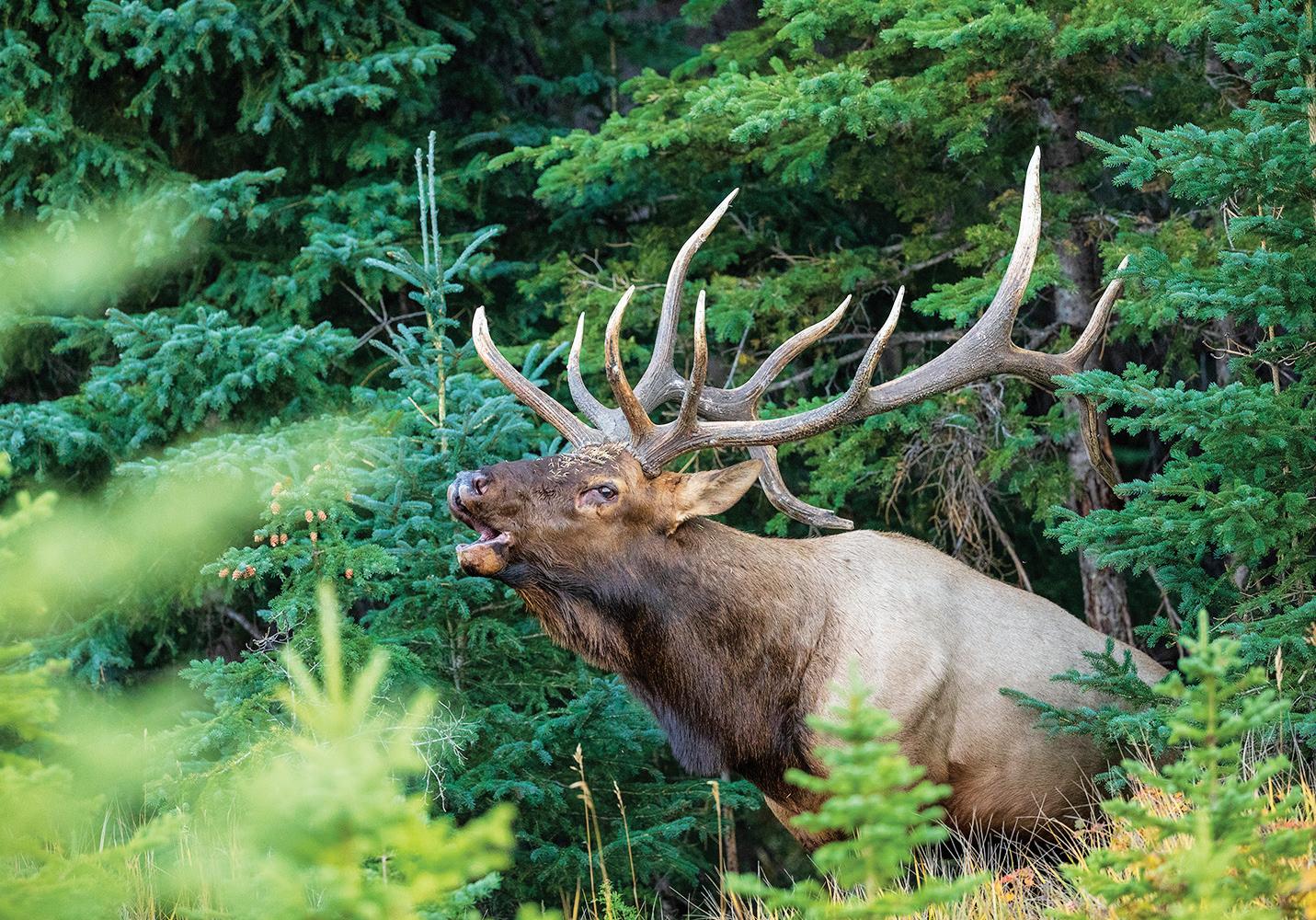
TAKE A RANGE READING
The number one reason I hear from hunters as to why they missed an elk
was because they didn’t have time to range it. There’s no excuse for missing an elk for the simple reason of not knowing precise distance. If you’re not sure, don’t shoot.
Guessing your range should never happen because it could result in a miss, or worse, a crippled animal. Before even calling, use your rangefinder to mark trees, rocks, cut
banks or whatever there is around you so you know the exact distance when a bull steps out.
EXPAND THE CALLS
September is a time when elk go through a vast range of behavioral changes. Early in the season calf and cow communication is high as calves venture further from their moms and
calsportsmanmag.com | SEPTEMBER 2023 California Sportsman 55
HUNTING
A bow shot on an elk should never be taken unless the yardage is known. Range all potential shooting lanes prior to setting up and calling because when a bull comes charging in, it gets exciting very fast. (SCOTT HAUGEN)
FROM FIELD...
WILD GAME SAUSAGES CAN KICK UP FRIED RICE
By Tiffany Haugen
Big game season is here, and whether you’re chasing deer, elk, bear, pronghorn or all of the above, this is a surefire recipe you’ll love.
Items made from wild game –Thuringer, summer sausage, pepperoni and jerky – should be used up before the possibility of freezer burn. Although vacuum-sealing may extend freezer life a few additional months, use up that game within a year to enjoy optimal flavors and textures.
This is a super-quick meal to whip up for lunch or dinner, or anytime. Use your imagination and add what you like, such as a few eggs, more vegetables, kimchi –even crushed potato chips can create a tasty twist to the fried rice.

2 cups chopped Thuringer or summer sausage
2 cups cooked, cooled, long or medium
grain rice
1 cup cooked, cooled, wild rice
2 to 3 tablespoons canola or coconut oil
½ onion, minced
2 to 3 cloves garlic, minced
1 inch fresh ginger, minced
2 tablespoons soy sauce
1 tablespoon oyster sauce
1 tablespoon sesame oil
1 tablespoon fish sauce, optional
¼ cup chopped green onion or chives
1 cup chopped pineapple
One sheet or packet nori
Fresh lime for garnish
In a small bowl, mix soy sauce, oyster sauce, sesame oil and optional fish sauce until thoroughly combined. In a large skillet, heat a tablespoon of canola or coconut oil on medium-high heat. Sauté Thuringer or summer sausage until it begins to brown. Remove from the skillet and set aside. Add another tablespoon of oil to the pan and sauté the onion, garlic and ginger until soft. Push vegetable mixture to the edges of the pan and add another tablespoon of oil, turn heat to high. Add cooked rice to the skillet, breaking up any clumps.
Fry for one to two minutes until rice is hot. Mix in onion mixture into rice and stir-in browned Thuringer or summer sausage. Sauté one to two more minutes. Stir in green onion or chives, pineapple and nori and continue to sauté another minute. Serve immediately with a squeeze of fresh lime if desired.
FIELD CARE NOTE
If looking to attain the best quality Thuringer or summer sausage possible, make sure the meat you work with or take to the butcher shop is clean. Nothing taints the end product faster than dirty, bloody meat, and the cook or meat shop is not to be blamed. Avoid tossing chunks of meat laden with sinew, or bloodshot, into the grind, as this will make for tough and unappealing bites. The better the quality of the meat you start with, the better the end product will be in both flavor and texture.
Editor’s note: To order signed copies of Tiffany Haugen's popular book, Cooking Big Game, visit scotthaugen.com for this and other titles.
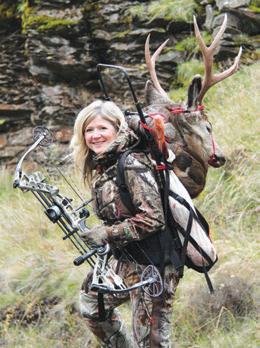

56 California Sportsman SEPTEMBER 2023 | calsportsmanmag.com HUNTING
Summer sausage or Thuringer from your big game animal can make your fried rice burst with flavor. (TIFFANY HAUGEN)
...
TO FIRE

Hunting
cows enter into estrus. As testosterone levels continue to build in bulls due to shifts in photoperiodism, their behaviors can change rapidly, even overnight if there’s a cold snap.
Early in the season, cow and calf chatter can be effective at pulling in bulls. Mixing in some high-pitched bugles is a great way to emulate what’s happening among elk herds,
increasing your chance of pulling in a young bull so you can put meat in the freezer.
As the month progresses, cut off bugling bulls by mimicking the same sounds they’re making, only louder and more aggressively, with a raspy finish. Make raking trees and stomping the ground part of your repertoire and you might just bring
an enraged herd bull right into your lap. I’ve fallen in love with Slayer Calls (slayercalls.com), which carries a complete line of elk calls, and they’re made in America.
HEAD FOR TREES
Even on hot days, hunting timber during the middle of the day can be productive. Listen for cows and calves talking back and forth, as they often get up and browse at midday and communicate with one another as this happens. This is when you can move in close and start making the same sounds. Follow up those cow and calf calls with bugles and you can get bulls active, even bugling and coming to calls.
If there’s a stiff wind, hunting downhill into rising midday thermals can put you within shooting range. As evening temperatures cool and heavy air drops, hunt uphill toward where elk bedded.
CHECK THE WIND
Elk have one of the best noses in the animal kingdom. You’ll never fool an elk’s nose. Elk hunting is an aggressive sport and we’re usually sweating within minutes of starting to hike. By midmorning we’ve sweated and air-dried multiple times, and the only way to prevent an elk from smelling you when hunting on the ground is by keeping the wind in your favor. Keep a wind check bottle handy and use it often. You can fool an elk’s eyes and ears, but never its nose.
USE GROUND BLINDS AND TREESTANDS
Hunting from a treestand will help keep your scent off the ground, as air travels like a river in a directional current. The higher your treestand, the better for keeping scent off the ground.
Ground blinds conceal movement and also help contain scent. While they’re not scent eliminators, ground blinds situated off a trail or a waterhole can help increase shot opportunities. There’s a reason both treestands and ground blinds continue growing in popularity among elk hunters
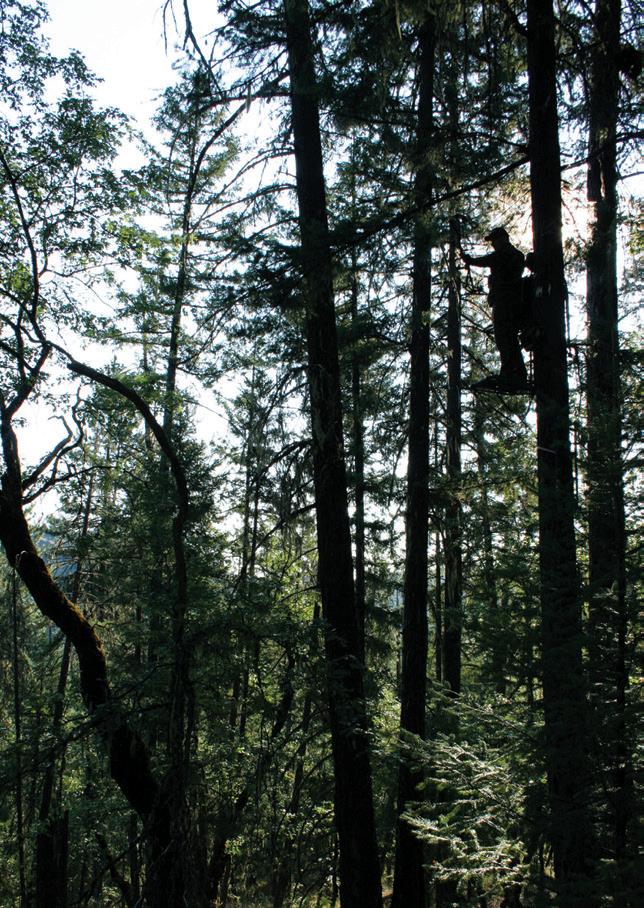
58 California Sportsman SEPTEMBER 2023 | calsportsmanmag.com HUNTING
from a treestand is a great way to get your scent off the ground, plus it is effective over both trails and water holes. (SCOTT HAUGEN)

throughout the West.
SET UP ELK DECOYS
Elk decoys can be used from a stand, blind or when covering ground. They’re great at pulling in leery bulls and taking their attention off you as they approach.
When using decoys from a blind or stand, situate them so an approaching
bull has to pass by you to reach it, thereby offering a shot. If hunting solo on the ground and trying to call in a bull, placing a decoy in front of you ensures you’ll see what’s happening and, as needed, allows you to change positions. If hunting with a buddy, have them move and call with a cow decoy behind you, basing their moves on an approaching bull. Montana
Decoys (montanadecoy.com) are my favorite elk decoy; they’re light, look lifelike and work.
STUDY WALLOWS
When you come across a wallow, don’t just look at it; study it. See if it’s muddy from a bull’s recent visit. If it is, look close to see if it’s stagnant water or if there’s a current. If there’s water flowing – such as from a spring, small creek or runoff – the bull sign could be minutes old. If there’s no flow, the sign could be days old.
To age such sign, mix up the mud with a stick or your foot. Watch closely to see if the sediment moves or suspends. If it moves and flows clear in a matter of minutes, hunt this area, since a bull could be near. If sediments don’t settle or flow away, the sign could be days old, meaning you’ll want to keep covering ground.
PUT IN A FULL DAY
Come elk season, camp is the last place you want to be. It’s not too early to start the morning at 3 a.m. and listen for elk as you slowly move to your hunting locale.
Stay out all day, hunting timber, shaded canyons and north-facing slopes. Take a quick nap in the hottest part of the day, snack as you go, and hunt until dark. You’ve worked too hard all summer to waste time in camp, and you can’t kill a bull if you’re not where he’s at.
This archery elk season, pay attention to what’s happening with elk behavior and adjust your approach accordingly. Take time to closely study elk sign, listen to how herds communicate and assess the conditions before making your next move. By paying attention to detail and making wise moves, your chance of success will greatly rise. CS
Editor’s note: Want to learn how to skin and cape an elk? Order Scott Haugen’s popular DVD Field Dressing, Skinning & Caping Big Game at scotthaugen.com. Follow Scott’s adventures on Instagram and Facebook.

60 California Sportsman SEPTEMBER 2023 | calsportsmanmag.com HUNTING
Scott Haugen is a full-time author of more than 20 years and credits much of his elk hunting success to acutely understanding their behavior. (SCOTT HAUGEN)


calsportsmanmag.com | SEPTEMBER 2023 California Sportsman 61


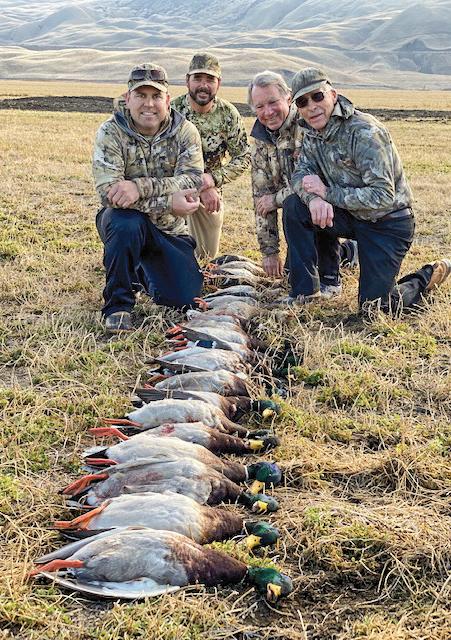


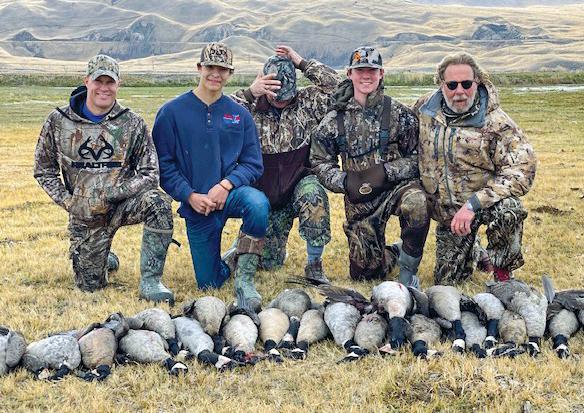



Also Available: Hunts in Saskatchewan, Canada! • Mallard Corn Pond Hunting — Total of 75 acres of flooded corn ponds for the 23-24 season in addition to our many other flooded ponds • Freeze Up No Problem! Aerators & Springs in Most Ponds E. Washington Tri-Cities • 509-967-2303 • pacific-wings.net See our videos on YouTube @PacificWingsHunting and Jay Goble Check Us Out On We normally average 6 ducks per person during a season
MY LOVE VS. DOVES
A HUSBAND GUIDES HIS WIFE ON HER FIRST MOURNING DOVE HUNTING TRIP

 By Tim E. Hovey
By Tim E. Hovey
The decoys were set and we were sitting tucked in the brush, sitting on our camouflage dove chairs, with the sun at our backs.

More than once the flapping Mojo decoy, which was off to my right, sent a surge of adrenalin through me and fooled me into thinking we had live company. My shotgun was resting on my knee as I searched the sky in the low light for targets. It was the opening day of mourning dove season and I was right where I wanted to be.
But this season would also be a bit different. To my left was a new hunter who was about to experience her first mourning dove hunt.
TAKING A NEW HUNTER out is nothing new to me. I try to get a new hunter out for a dove shoot every year and over the last 20 years I have taken numerous first-timers out to introduce them to hunting. I even trained both my daughters to hunt, starting them off with an opening-day dove hunt. However, this new hunter had never hunted before, nor showed any interest in hunting until very recently. This new hunter was my wife.
Cheryl and I have been together for over 30 years, and she knew I hunted when we first started dating. I would occasionally ask her if she wanted to tag along on a hunt and she would always decline. After many years of getting the same answer, I stopped asking. When our daughters showed interest in coming out with me, I again started asking her if she’d like to join the family tradition. Her answer was
calsportsmanmag.com | SEPTEMBER 2023 California Sportsman 63
HUNTING
Cheryl Hovey had been indifferent about joining her husband, author Tim Hovey, on a hunt. But there was some intrigue to give it a shot, and after some offseason practice Cheryl was ready for last year’s fall dove opener. (TIM E. HOVEY)
always the same: “That’s your thing.”
Then out of the blue recently, she asked if I would teach her how to hunt. Both my daughters are on their own and very busy with navigating adulthood, and they don’t get out to hunt as often as we used to. I was puzzled but thrilled about my wife’s request. When I asked her why the sudden change of heart, she exclaimed, “I want to see what it’s all about!”
Over the summer we’d practice gun safety and how to follow and shoot clay pigeons. We were really starting from the very beginning. On a few trips, I could see her frustration
as she’d flinch at the recoil, usually resulting in a miss. I suggested we drop her down to a smaller shotgun. She looked at me and simply stated, “What gauge do you shoot?” I told her and she said she wanted to shoot the same.
FOR SEVERAL MONTHS WE’D head out once a week, sometimes twice, to review gun safety, practice with the shotgun and hopefully knock down a few clay targets. Cheryl slowly began to connect on the flying clays and feel more comfortable with the shotgun. I hadn’t said a thing about the upcoming September 1 dove opener, but my plan was to take
her out on it for her first hunt.
One of the things I sort of struggled with was taking Cheryl out into a sea of other hunters. While a few of my spots are wide open, they still draw a good number of other wingshooters. I didn’t want her to get rattled or feel self-conscious about being around other hunters. That’s when my buddy Mike stepped in.
Mike owns almost 200 acres of quality waterfowl property, and the previous season he’d planted food crops to attract ducks to the ponds on his parcel. I had helped him out with some habitat restoration, and we were out at his place checking things out when we scared up 20 mourning doves from a dead tree near one of his fields.
Before I could formulate a polite way to ask Mike about dove hunting on his property, he struck first. “Tim, you hunt dove, right?” Before I could answer, he suggested I head out to his place for opening day. When I told him my wife had developed an interest in hunting, he got all excited. “Then you definitely need to bring her out here!” I wasn’t going to argue.
ON OPENING MORNING, WE set up at the edge of one of Mike’s fields, and we had the entire property to ourselves. I glanced over at Cheryl and could see she was nervous and excited. I smiled to myself knowing that after today, she might never be the same.
Against every fiber of my hunting being, I decided to spot incoming birds for Cheryl and give her the first shots. Anyone who has hunted with me, including both my daughters, knows that this is beyond tough for me to do. However, I really wanted Cheryl to bag her first upland game bird.
A little after shooting time, a pair of mourning doves came towards our decoy set from straight out front. I quietly pointed them out to Cheryl and watched her rise and shoot a little too soon, scattering the pair; one flew right over my head. On instinct, I dropped the dove in the brush behind me. I instantly felt bad, but the dove had flown outside of Cheryl’s

64 California Sportsman SEPTEMBER 2023 | calsportsmanmag.com HUNTING
By midday, Tim and Cheryl already had a nice haul of birds. (TIM E. HOVEY)

HUNTING
safe shooting zone.
When I got back to my chair, Cheryl wanted to know what she had done wrong. I told her to be more patient and to lead the bird just a bit before squeezing the trigger. I had seen her shell wad a foot behind the bird she shot at.
A short time later, a single dove came in unnoticed on Cheryl’s side and landed in the decoy spread. We both spotted it just as it settled in with its plastic brothers. Cheryl stood up, swinging her shotgun towards the bird and the dove instantly took flight.

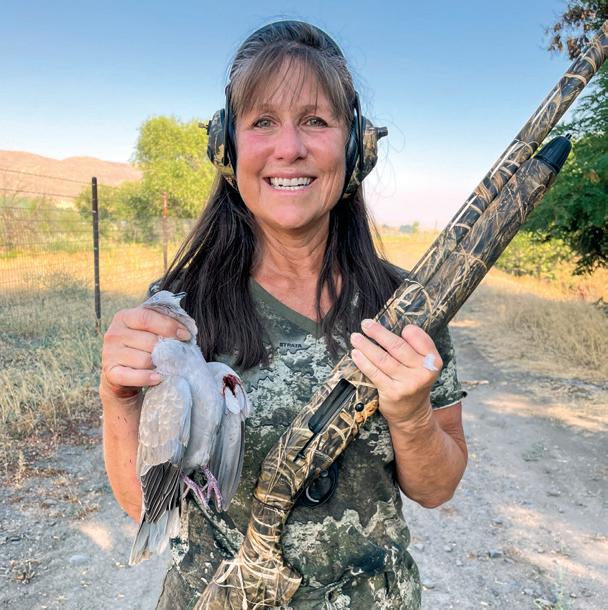
I cringed a bit as the bird’s position put the Mojo decoy between it and Cheryl. I kept quiet. Cheryl followed the bird, and when it cleared the decoy, she fired. The dove dropped to the ground. After a summer of training, her first ever hunted animal was on the ground.
We celebrated with a hug and a few quick photos. The hunting bug had bitten her, and she wanted to chase a limit. We settled back down and waited. The flight was slow, but it definite-
“When can we go again?” Cheryl asked her husband following a successful debut. ”Looks like I have another hunting buddy,” he writes. (TIM E.
ly fit the mood of Cheryl’s first hunt. I was able to give her advice and answer any questions she had. It was a perfect first hunt for Cheryl.
As the mourning dove flight died down, we started to attract invasive Eurasian collared doves to our spread. After a few missed shots, Cheryl connected on another first, dropping a big collared dove with a long shot. And with an abundance of farmland surrounding Mike’s property, pigeons were occasionally drawn to the decoys. After a few sightings, Cheryl added a fat pigeon to her list of species firsts.
We took a break for lunch and then waited for the afternoon heat to lift. At around 4:30, we moved our setup and waited for more bird action. Unfortunately, it looked like the flight was over for the day. We gathered up the birds for a few photos. We ended up with a dozen mourning doves, five Eurasian doves and two
66 California Sportsman SEPTEMBER 2023 | calsportsmanmag.com
Cheryl with her first Eurasian collared dove, harvested on her maiden hunt. (TIM E. HOVEY)
HOVEY)
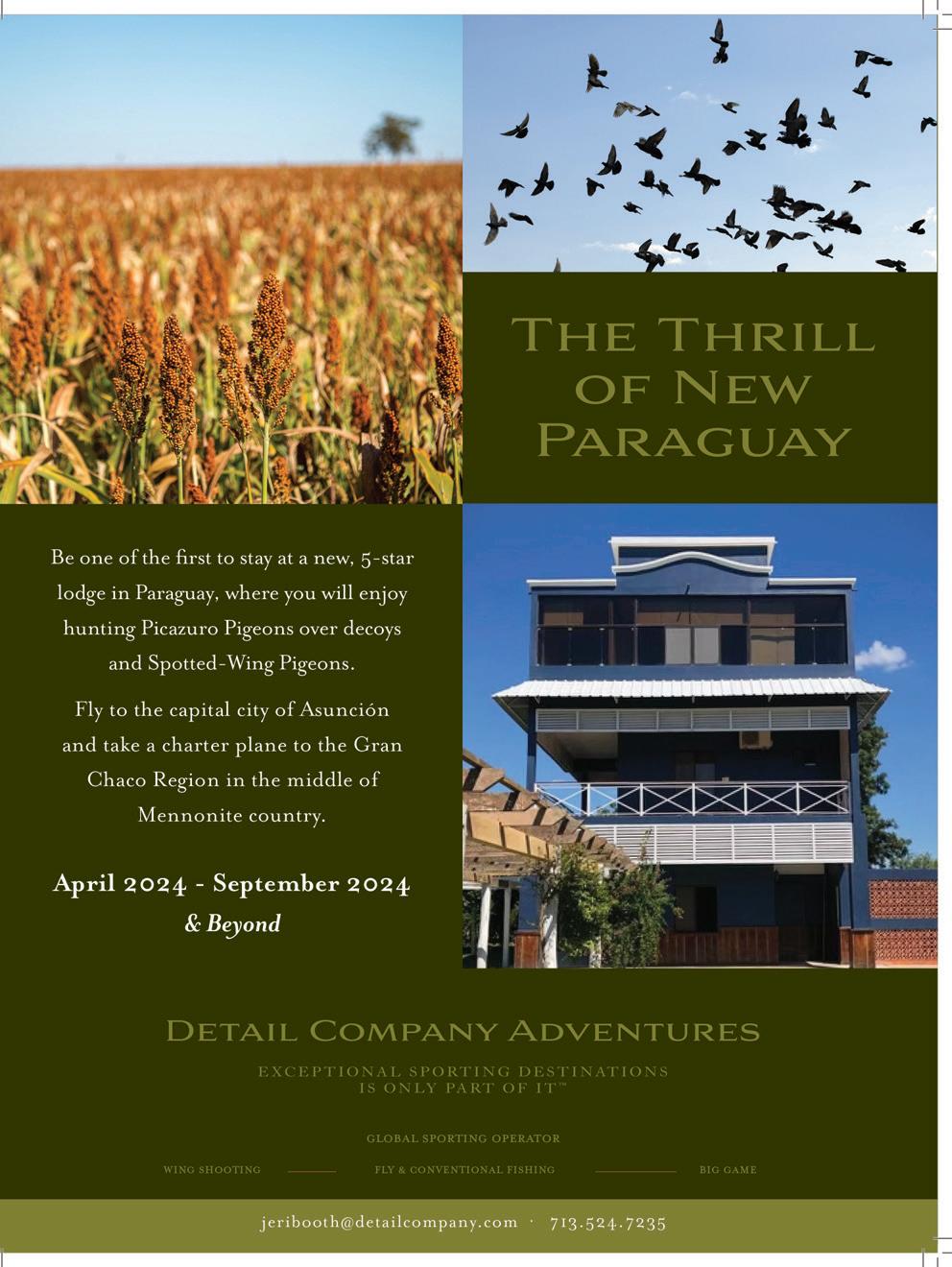
pigeons. It was an amazing day.
WE COLLECTED OUR GEAR and packed up for the drive home. On the way back, Cheryl was excited to talk about the hunt. She was making a list of stuff to get at the store so we could cook up some dove poppers from the day’s haul, when Mike gave me a call. He wanted to know how the hunt had gone and I let him know we both had had a great time.
He extended the offer to hunt doves on the property anytime we wanted, and he wanted to make sure I invited Cheryl out to his place this season for waterfowl hunting. I thanked Mike and hung up. Having heard the entire conversation, Cheryl was all smiles.
“When can we go again?” she asked. Looks like I have another hunting buddy. CS
Editor’s note: California’s first dove hunting season runs Sept. 1-15.

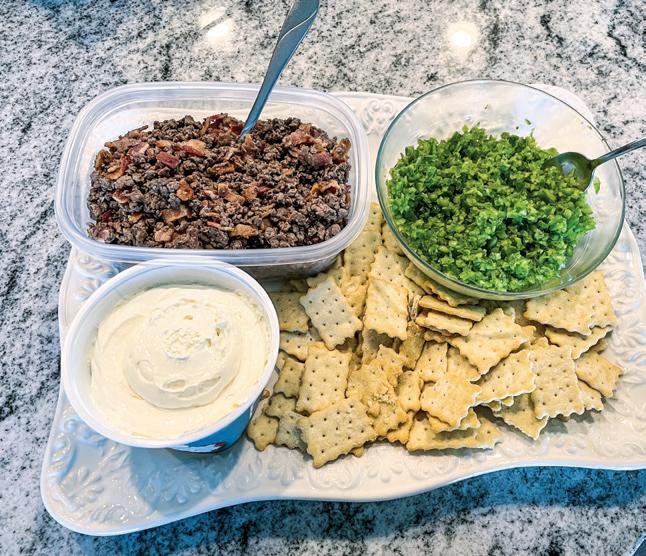
68 California Sportsman SEPTEMBER 2023 | calsportsmanmag.com HUNTING
A haul of upland birds meant a dinner of dove poppers for the couple and a new husband-wife activity to pursue. “The hunting bug had bitten her,” he writes about Cheryl. (TIM E. HOVEY)


calsportsmanmag.com | SEPTEMBER 2023 California Sportsman 69





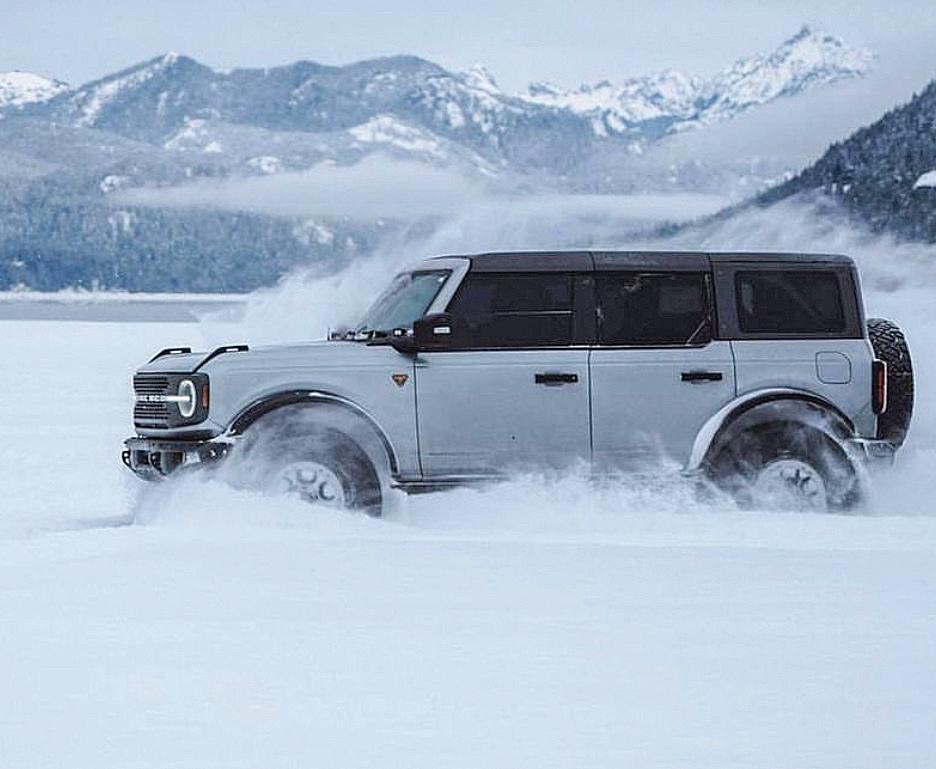
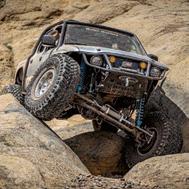


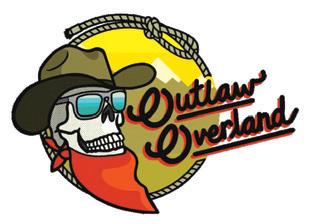
70 California Sportsman SEPTEMBER 2023 | calsportsmanmag.com BOOK ONLINE AT WWW.C2FFST.COM NRA CERTIFIED INSTRUCTOR CHRISTOPHER CUNIO + + + + + + + + + + CLASSES OFFERED GUN SAFETY SEMINAR NRA seminar introduces new gun owners to gun safety fundamentals RUN YOUR GUN One on one firearms coaching with Christopher RANGE SAFETY OFFICER NRA Range Safety Officer (RSO) Certification NRA EDDIE EAGLE GUNSAFE® PROGRAM NEW GUN OWNER The NRA Basics of Pistol Shooting course PREPARE TO CONCEAL NRA Concealed Carry Weapon (CCW) Certification FIREARMS IN THE HOME NRA Personal Protection In the Home Certification FIREARMS OUTSIDE THE HOME NRA Personal Protection Outside the Home Certification LONG GUN NRA Basic Rifle for basic and skill based learning with a long gun BASIC SHOTGUN Basic shotgun for basic and skill-based learning with a shotgun SCAN FOR MORE INFO » Custom Fabrication » 4WD Service/ Repair » Custom Suspension » Lift Kits 206-580-5091 »outlaw-overland.com
ON SKUNKS, SEEDS AND E-BIKES
By Scott Haugen
Ijust fell in love with my wife Tiffany, all over again. I’d let our dogs Echo and Kona out to go potty before bed. It was 11 p.m. We live in the country. Echo did her thing and came right in, as usual. Kona lingered and when I called him, he didn’t come – which is not like him. Two minutes later he came barreling in, shaking his head, frothing at the mouth. He’d just
taken a mouthful of skunk.
I hollered to Tiff and she rushed to help. I had her hold Kona while I grabbed a shotgun and flashlight and went out looking for the skunk in the field. A few minutes later I returned, having found nothing. That’s when I saw Tiff standing over Kona, sleeves rolled up, hair back, bathing up. She didn’t hesitate. She jumped right in, took charge, and helped fix a bad situation.
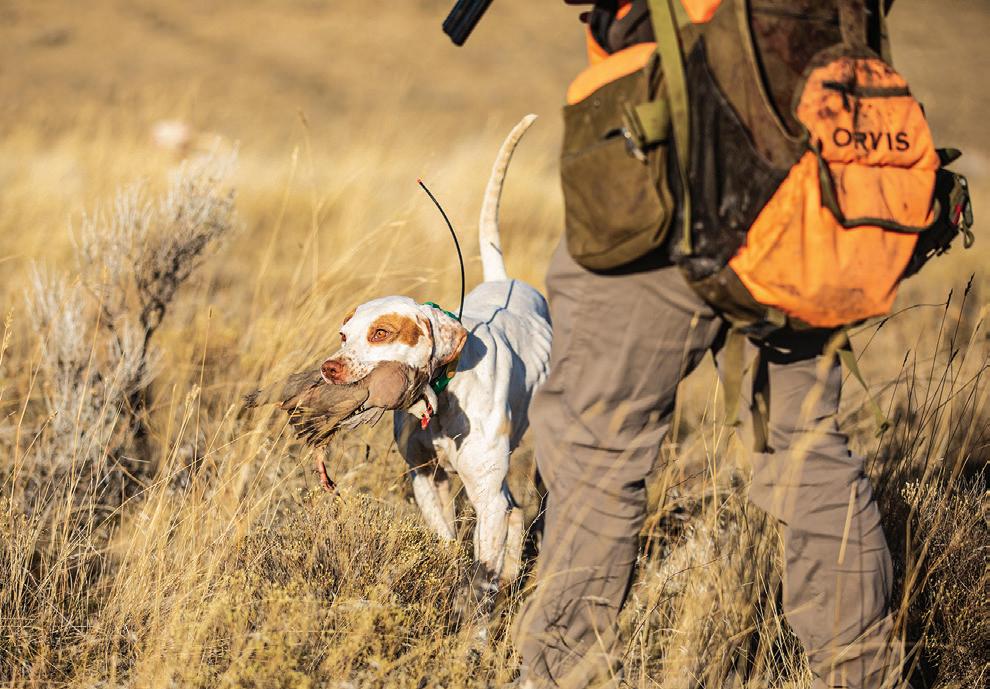
An hour later we headed to bed,
confident the quick reaction didn’t leave either one of us smelling. As for Kona, Tiff’s quick actions had him smelling much better than the last time he caught a skunk; he even slept in the house on this night.
Three hours later, we were headed to the airport. That’s where Tiff ran into a friend and told her she was headed to Europe to visit one of our sons.
“You might want to do something about that skunk smell,” the friend said.
calsportsmanmag.com | SEPTEMBER 2023 California Sportsman 71
Bird season is here, but your four-legged hunting partner faces on-thejob hazards that you need to be prepared to handle. (SCOTT HAUGEN)
HUNTING
HUNTING
Tiff and I were used to it and didn’t notice she had offensive skunk odors in her hair. And when I got home I found the skunk. Kona had killed it in the field and brought it to the house, which explained the strong, lingering odor.
TO WASH KONA, TIFF did two things. First, she poured some hydrogen peroxide into a bowl, made a paste with baking soda and rubbed it on Kona. I rinsed him off while Tiff then mixed 1 tablespoon of Dr. Bronner’s Pure-Castile Soap and 2 teaspoons of MinkSheen Pet Shampoo with a bit of warm water. She used a car washing mitt, which we had to later toss in the trash.
Attacking the skunk smell with this combination worked. The last time Kona battled a skunk, it took two weeks before he could sleep in the house, and that’s because we were slow to treat it.
This time the odor faintly came back in Kona’s hair every few days for about three weeks, mainly after being
The QuietKat electric bike has taken the author’s dog training to new levels. It’s also saved him valued time, and kept his dogs from waiting so long when setting blind training drills.

outside in the heat, but it wasn’t bad. I only had to give him a bath two more times, and for that I used warm water and Dawn dish soap.
I’ve heard of all sorts of remedies to help relieve skunk odor on dogs. Tomato juice hasn’t worked for us, and I’ve not had luck with commercial sprays. One hunting buddy swears
by spraying a dog down with scentblocking agent, like what big game hunters use to contain their scent. I picked up two bottles and have one ready at the house, the other in the truck, should there be a next time. The big key to knocking down skunk odors on your dog is having something ready so you can act fast.
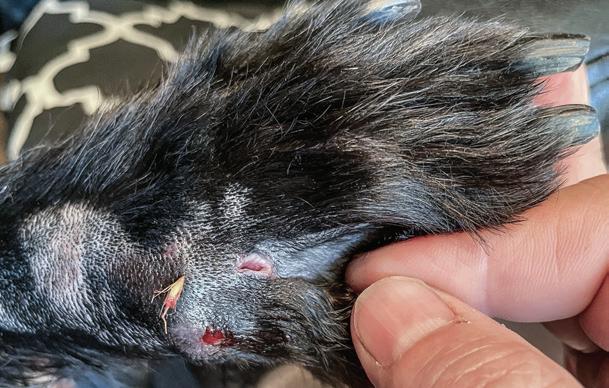
72 California Sportsman SEPTEMBER 2023 | calsportsmanmag.com
This foxtail grass seed burrowed between the dog’s toes, and that’s where the vet tried to grab it with forceps, with no luck. Then the seed festered out the top of the foot, thank goodness. Check your dog regularly –these seeds are no joke. (SCOTT HAUGEN)
(SCOTT HAUGEN)

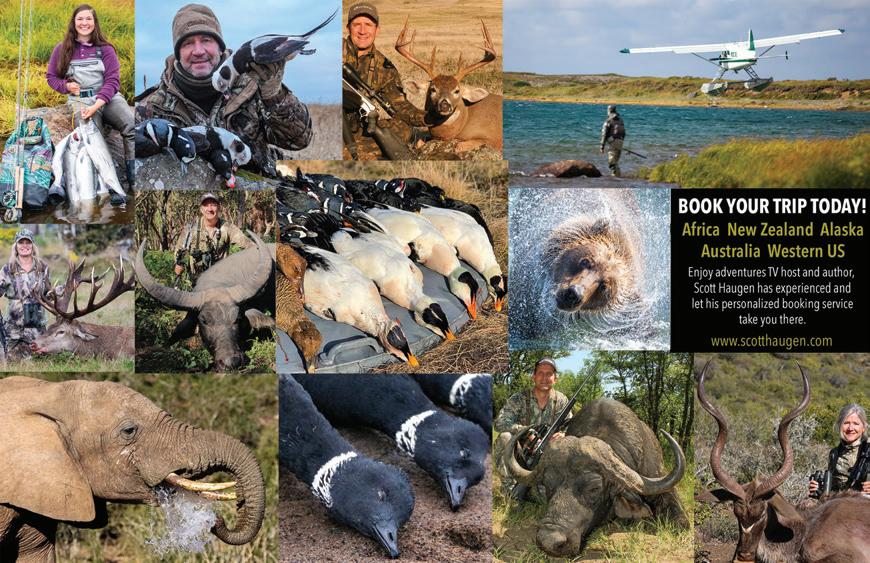
calsportsmanmag.com | SEPTEMBER 2023 California Sportsman 73
HUNTING
AS I WRITE THESE words, Kona just went through another ordeal. This morning, I pulled a foxtail grass seed from his festered foot. It had been there 28 days, and he was three days away from having surgery to remove it. Two days ago my vet put Kona under and dug around with forceps for 45 minutes, trying to find the seed.
My vet said he was averaging one of these encounters a day, way above average. He said in all his years, it’s been the worst summer he’s ever seen for these terrible seeds.
“If you can’t get the seed out within five days, get to a vet,” he told me.
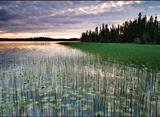

“Contrary to what many people believe, foxtail grass seeds do not dissolve in the body,” he added. “They keep digging and traveling, until they pop out or are removed, surgically.”
If they travel into the heart or brain, these seeds can be deadly.
ON A POSITIVE NOTE, I recently got a
QuietKat electric bike. I’ve never owned an electric bike, and figured it would be the perfect tool to help me more efficiently cover ground when running trail cameras and to use on upcoming hunts this fall. I also wanted to use it in dog training. But what I didn’t expect was that my dogs would immediately love it.
The moment I hopped on the QuietKat, Echo and Kona wouldn’t leave my side. I rode down our driveway and 200 yards on a gravel road. Then I took the bike into a field, both dogs still running with me. It was like they were puppies with a new toy. They ran over 2 miles, fast, and it was one of their best sprint workouts ever. They slept hard after breakfast that morning.

Since then, I’ve routinely used the bike on morning and evening workouts with the dogs. Instantly, I saw that my jogging, even riding my mountain bike alongside them, wasn’t pushing them like I should.


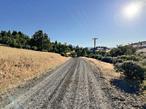

Because of the QuietKat, both dogs will go into this hunting season in better shape than ever before.


I also used the bike to quickly and efficiently place bird wings in expansive fields. On the electric bike I could do it in two minutes; on foot it would take 15 minutes. This is way more efficient for my dogs, which sit waiting, out of sight.

I used the electric bike to set bumpers for ladder drills, and position bumper piles and a white bucket for sight training drills. The QuietKat has made my training much more efficient and my dogs don’t get bored. I can’t wait to keep building my training program around it, and hunt with it this fall. CS
Editor’s note: Scott Haugen is a full-time writer. See his basic puppy training videos and learn more about his many books at scotthaugen.com. Follow his adventures on Instagram and Facebook.
74 California Sportsman SEPTEMBER 2023 | calsportsmanmag.com
Selling Land in America for almost 40 years! Are you looking for CHEAP LAND FOR SALE as low as $748/acre? Or are you looking for a CHEAP MONTHLY PAYMENT as low as $67/month? We have Land For Sale in 45 counties throughout: Alaska, Arizona, California, Colorado, Florida, Georgia, Hawaii, Indiana, Kentucky, Minnesota, Mississippi, Missouri, Nevada, New Mexico, North Carolina, Oregon, Tennessee, and Texas Questions? Need Help? Visit BillyLand.com Or call 800-724-0551 Over 200 Online Auctions SIGN-UP TO BID & BUY!










































 By Joe Sarmiento
By Joe Sarmiento



































































 By Cal Kellogg
By Cal Kellogg





























 By Tim E. Hovey
By Tim E. Hovey



































